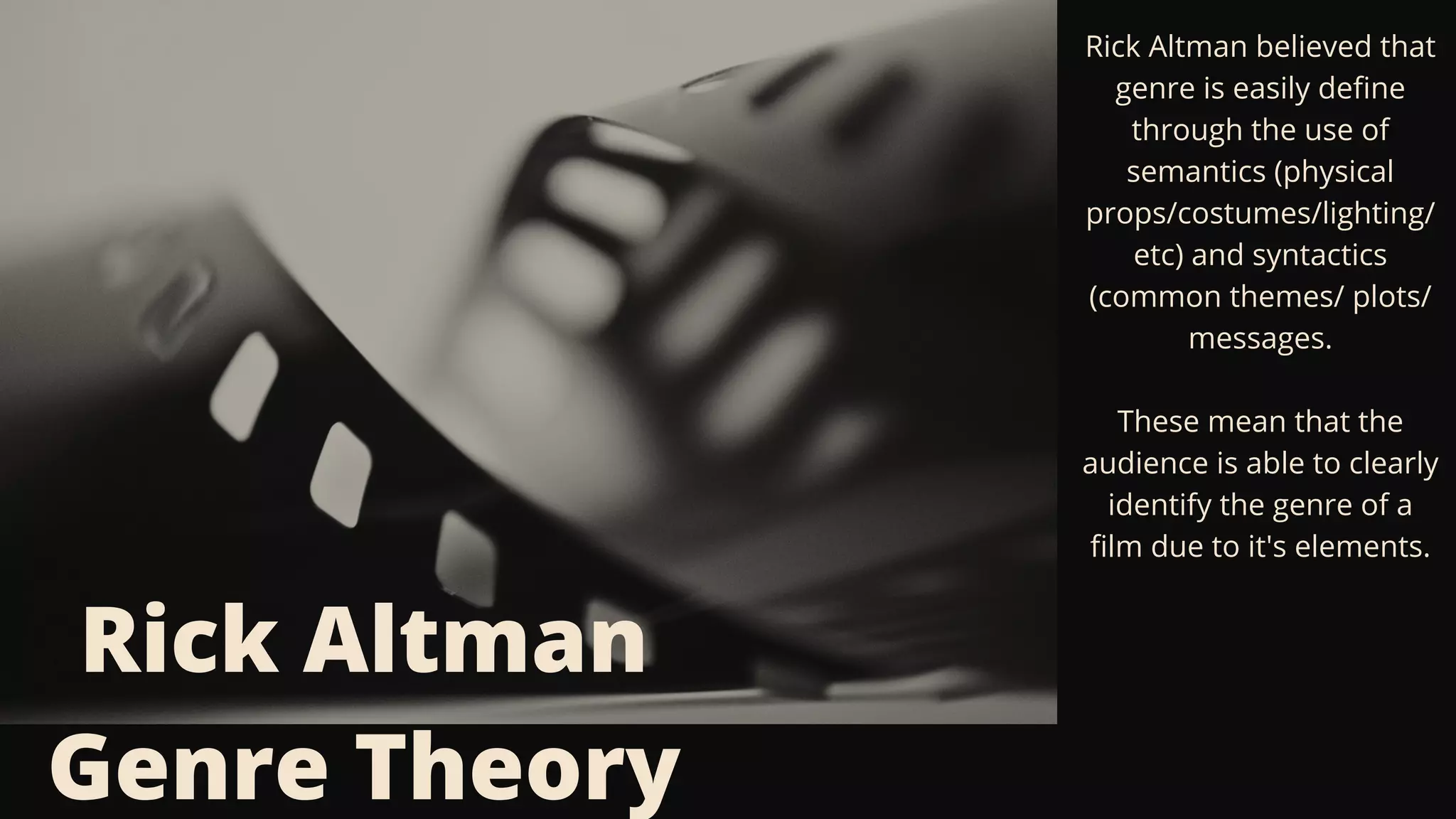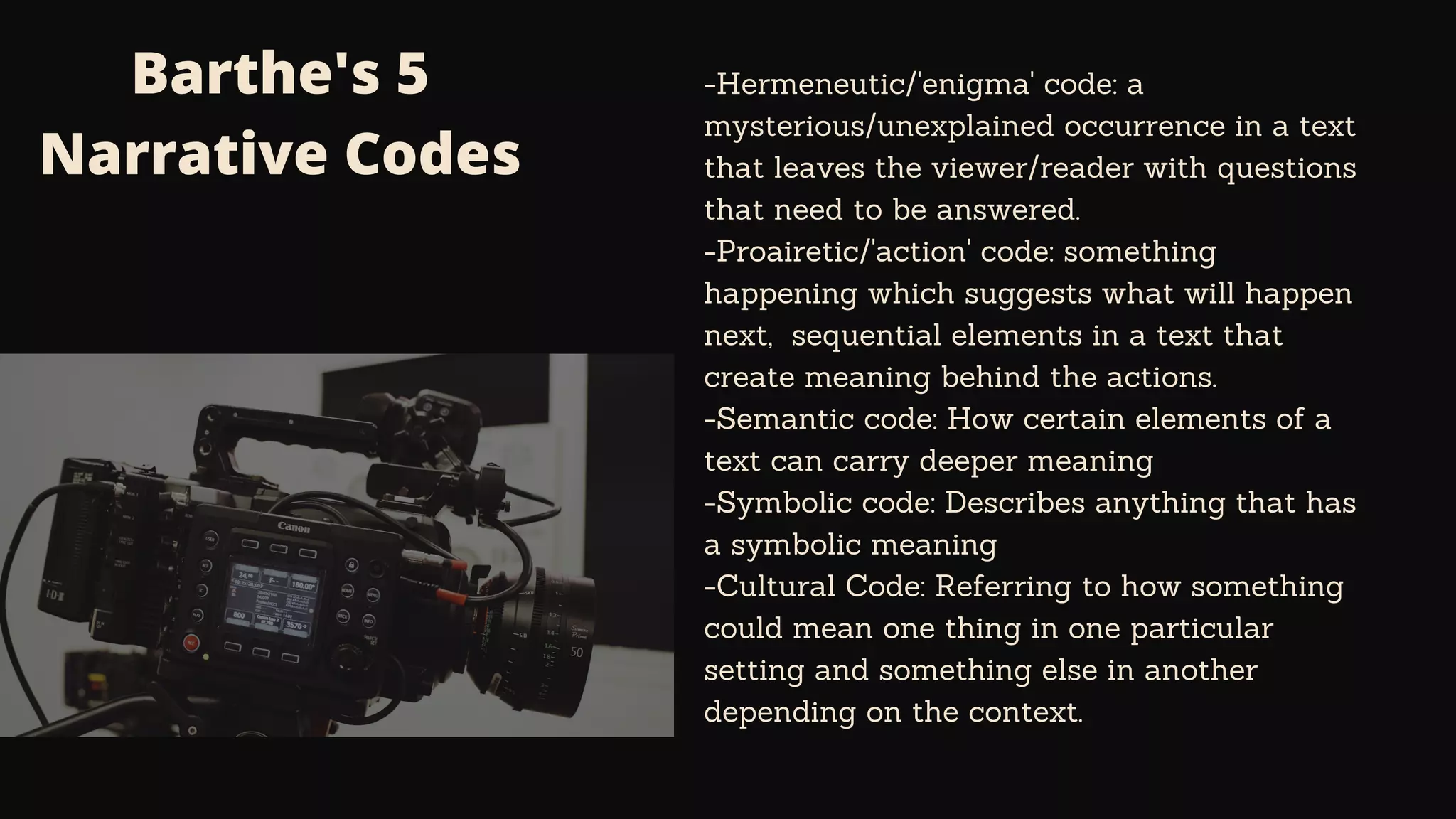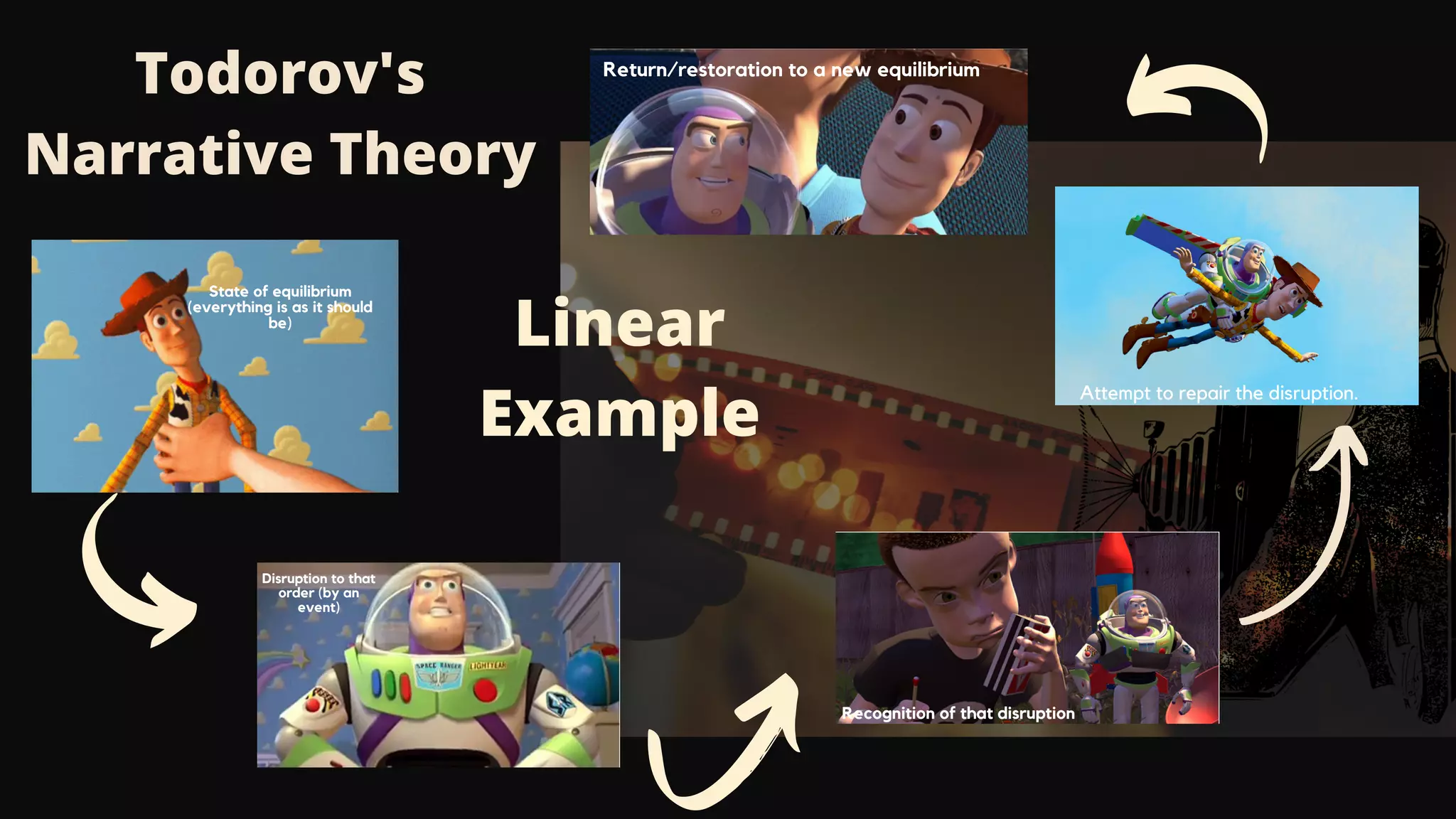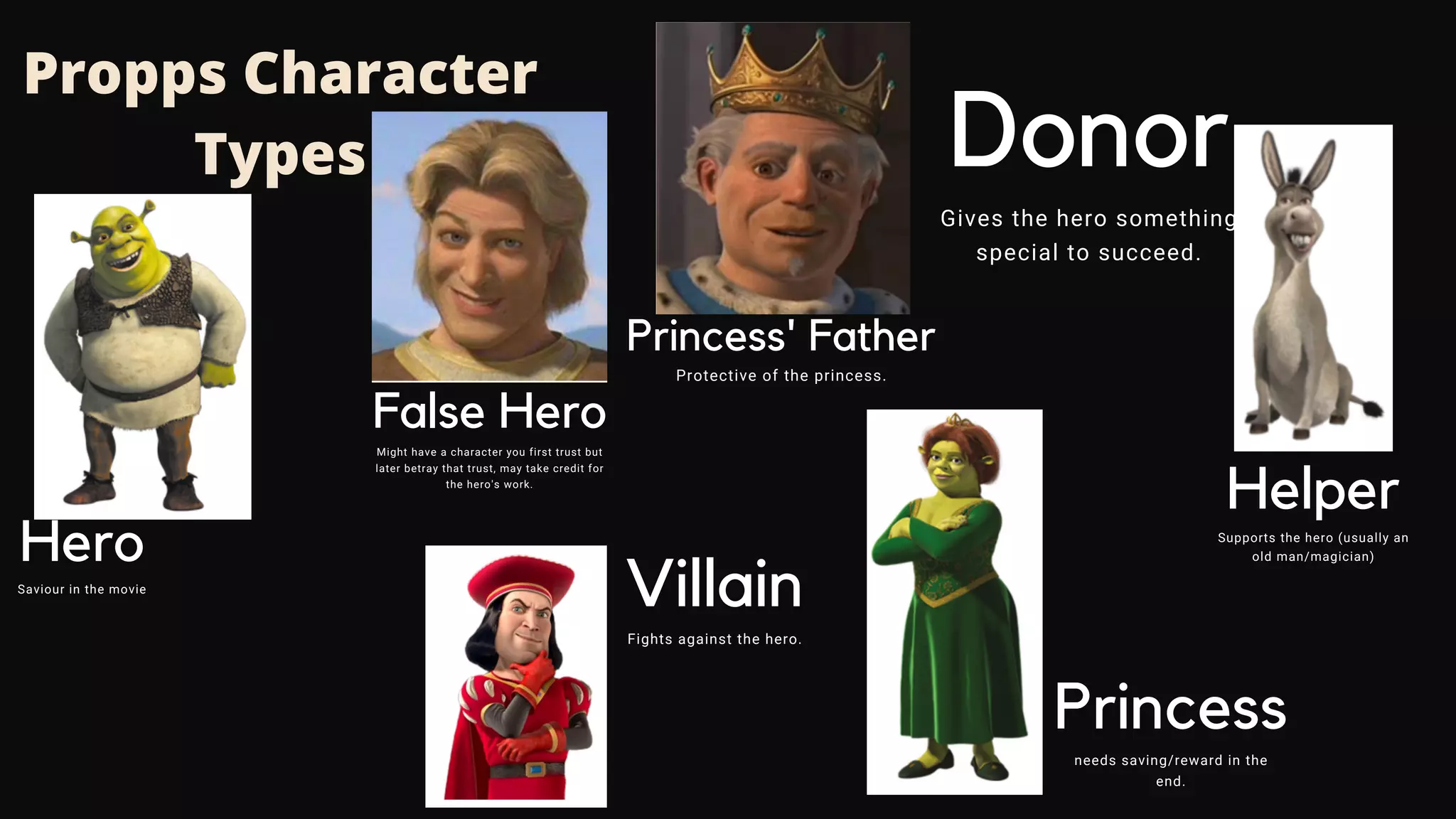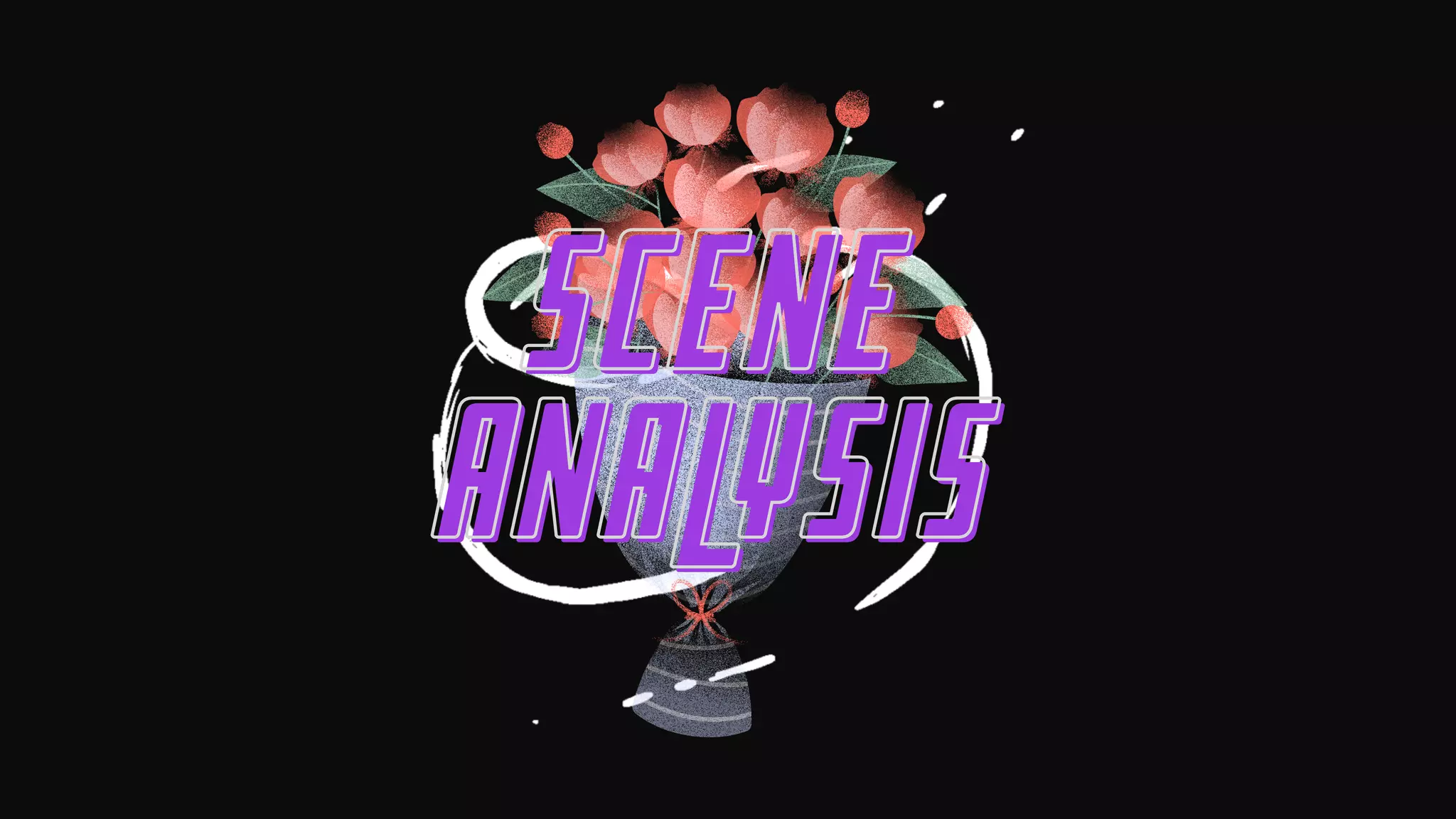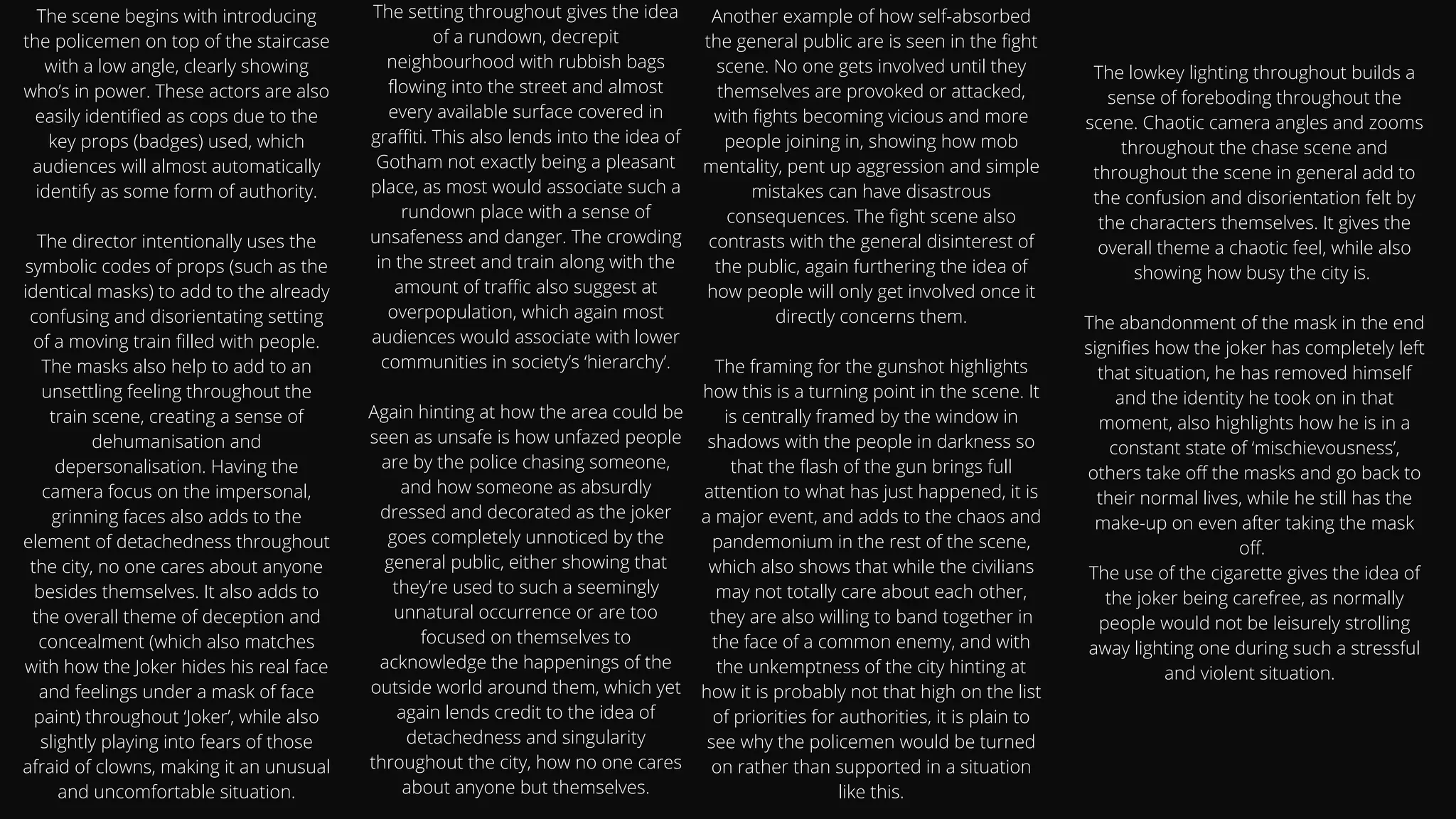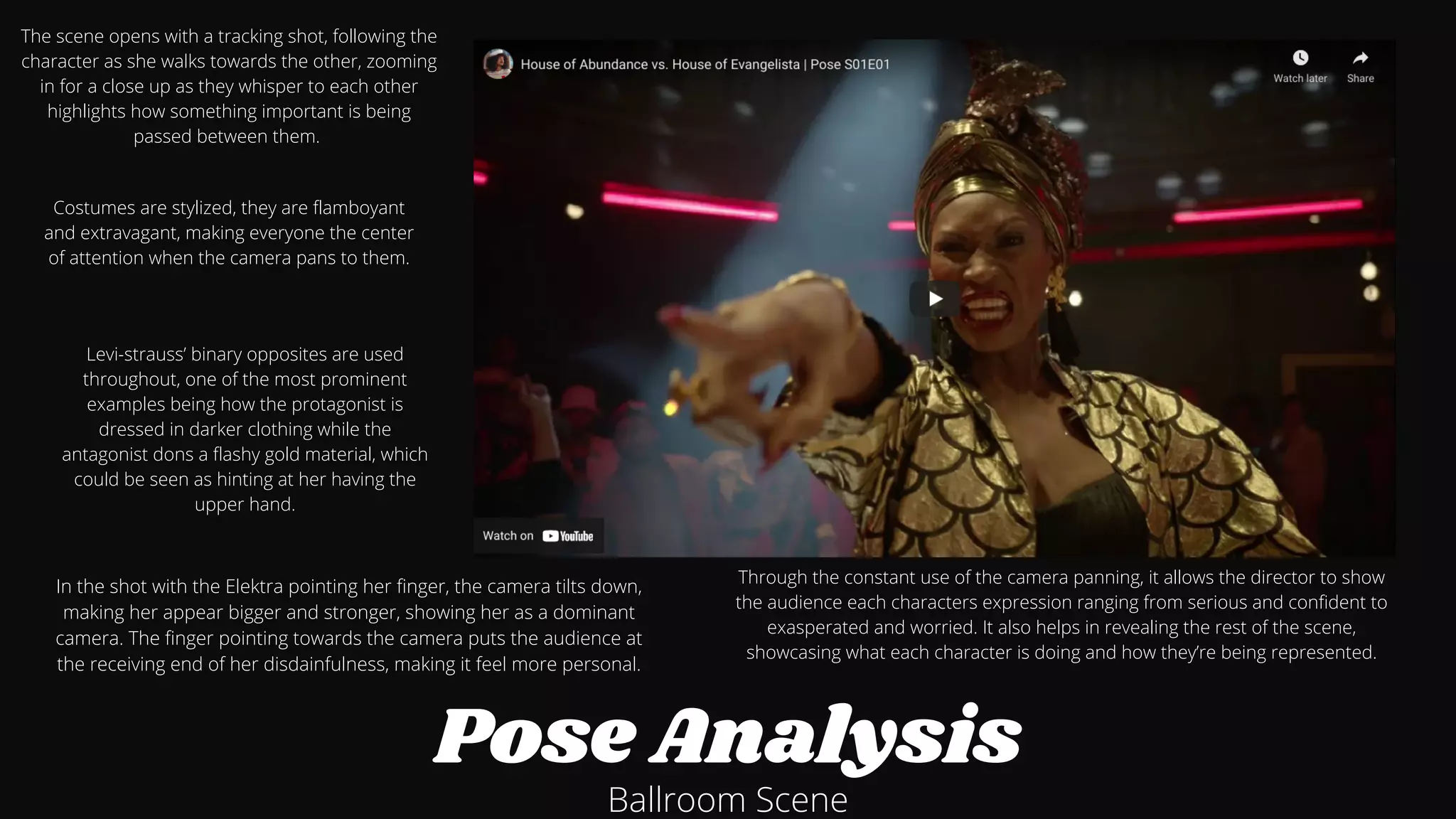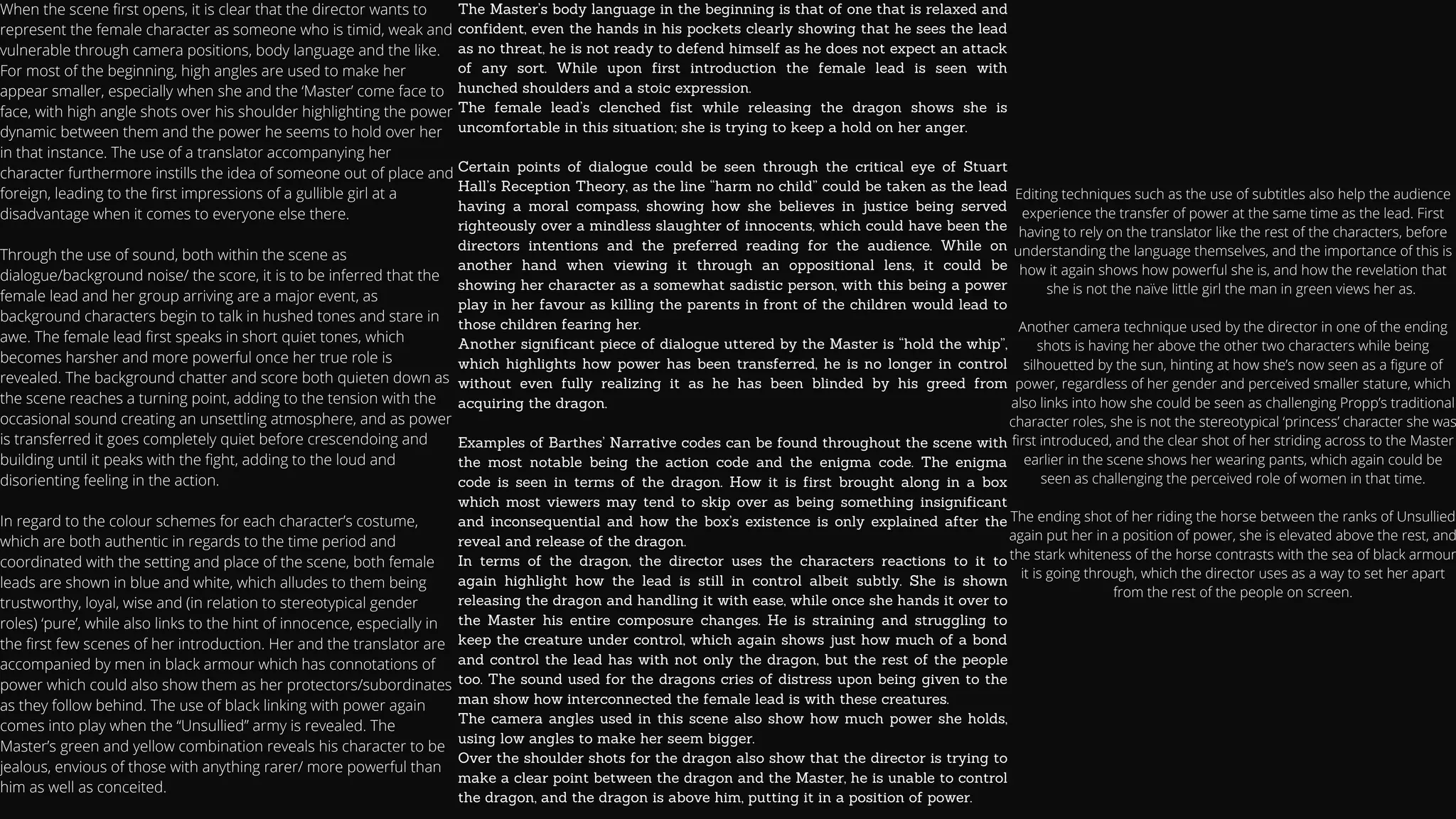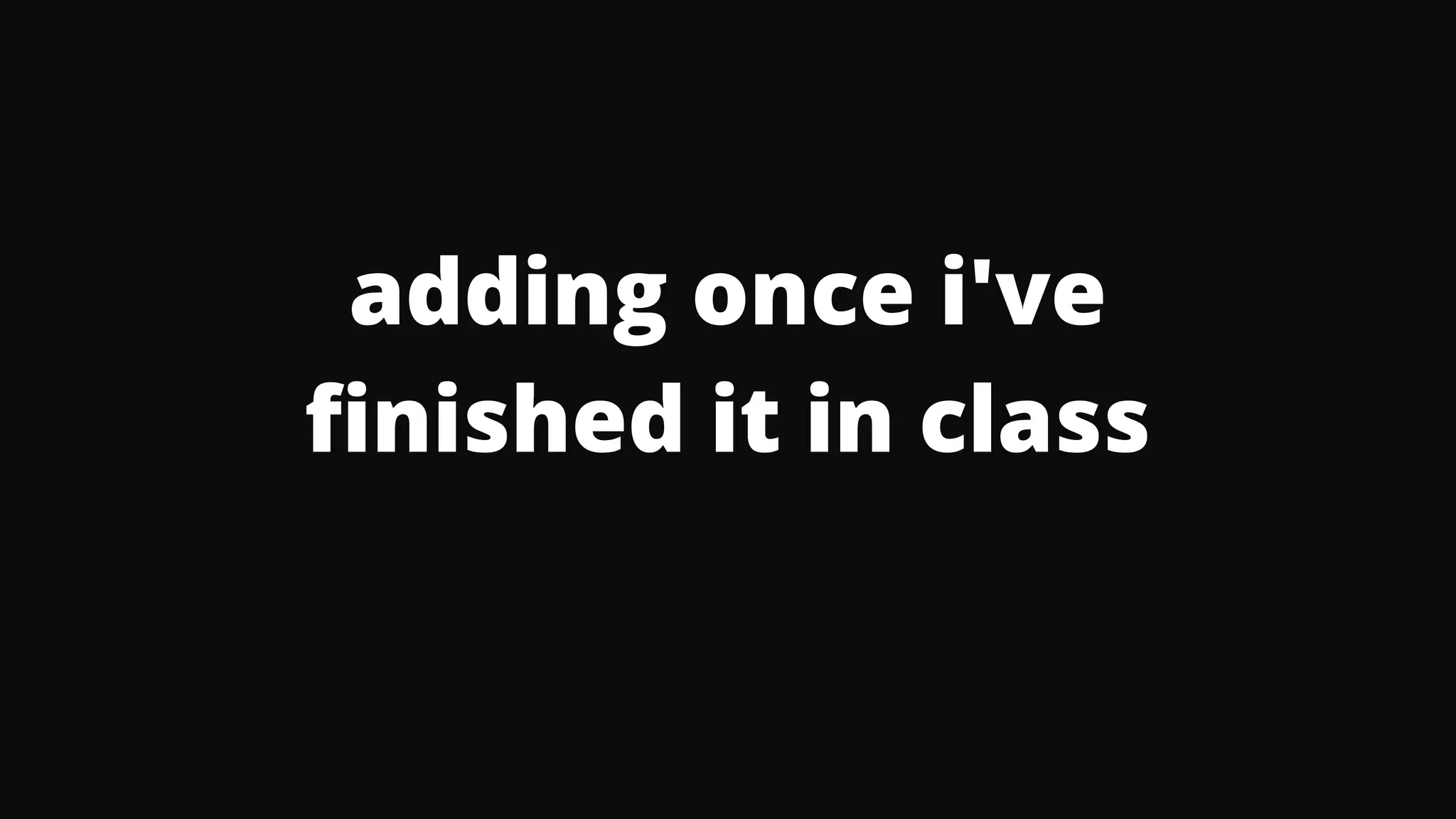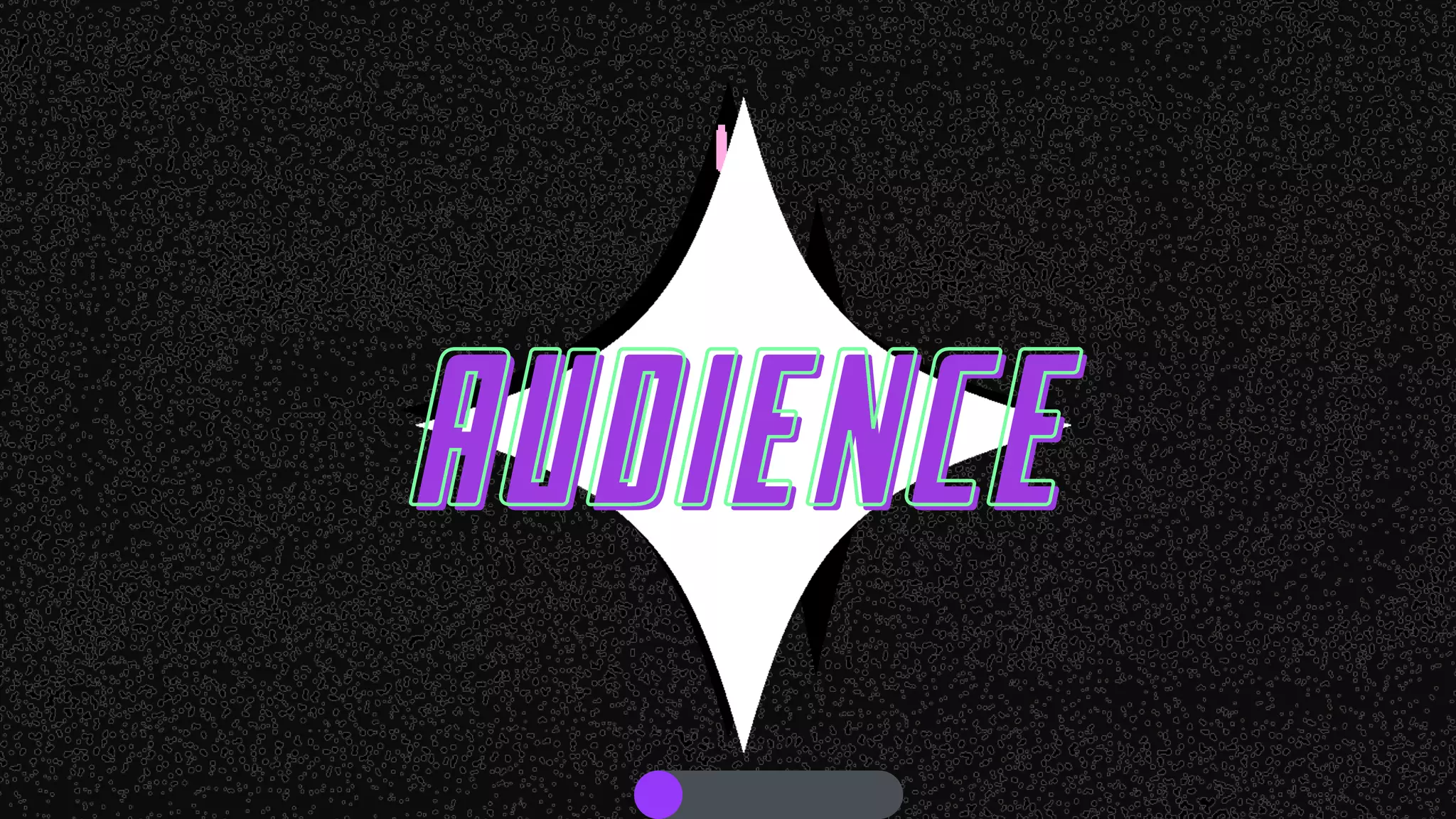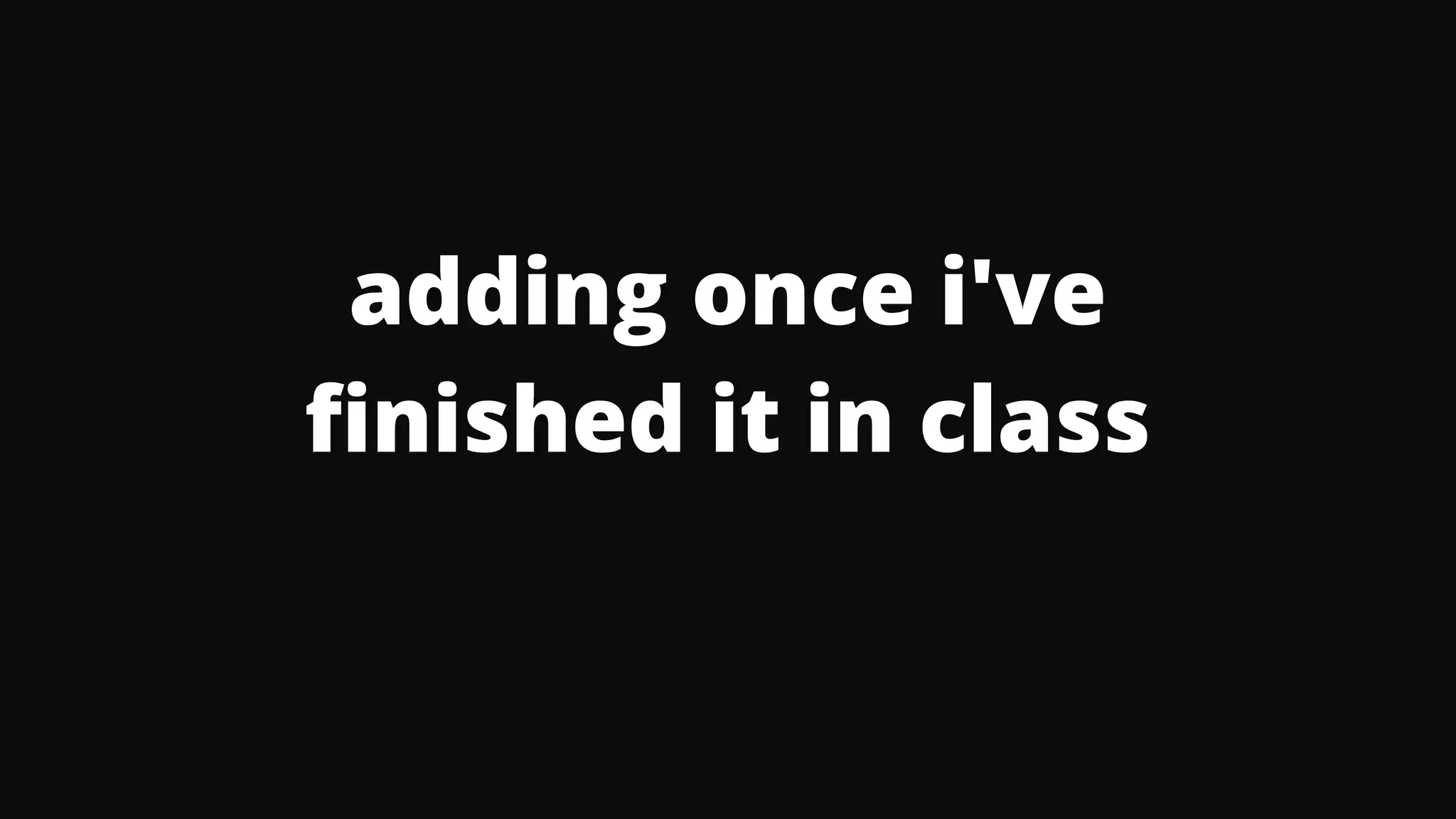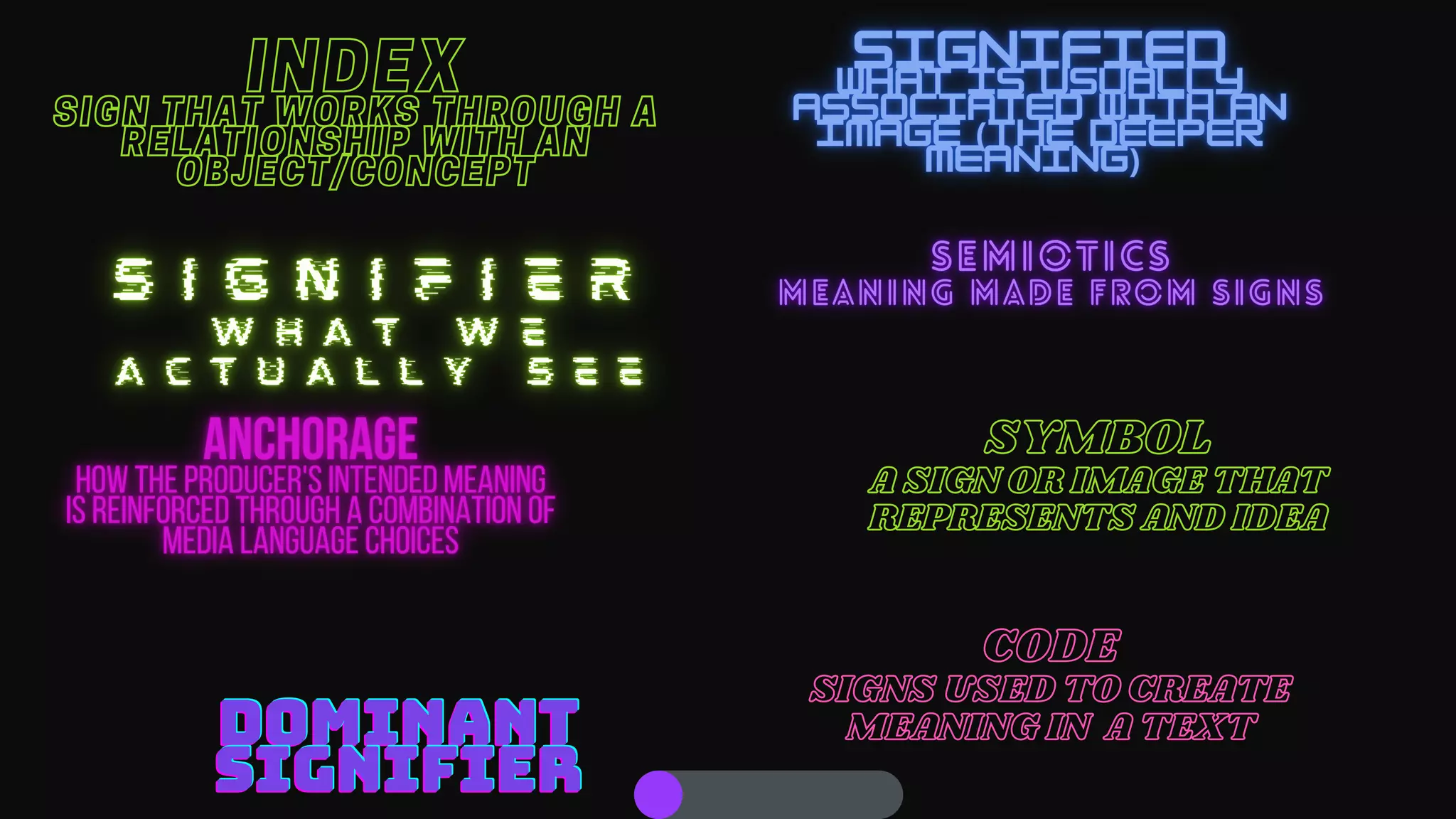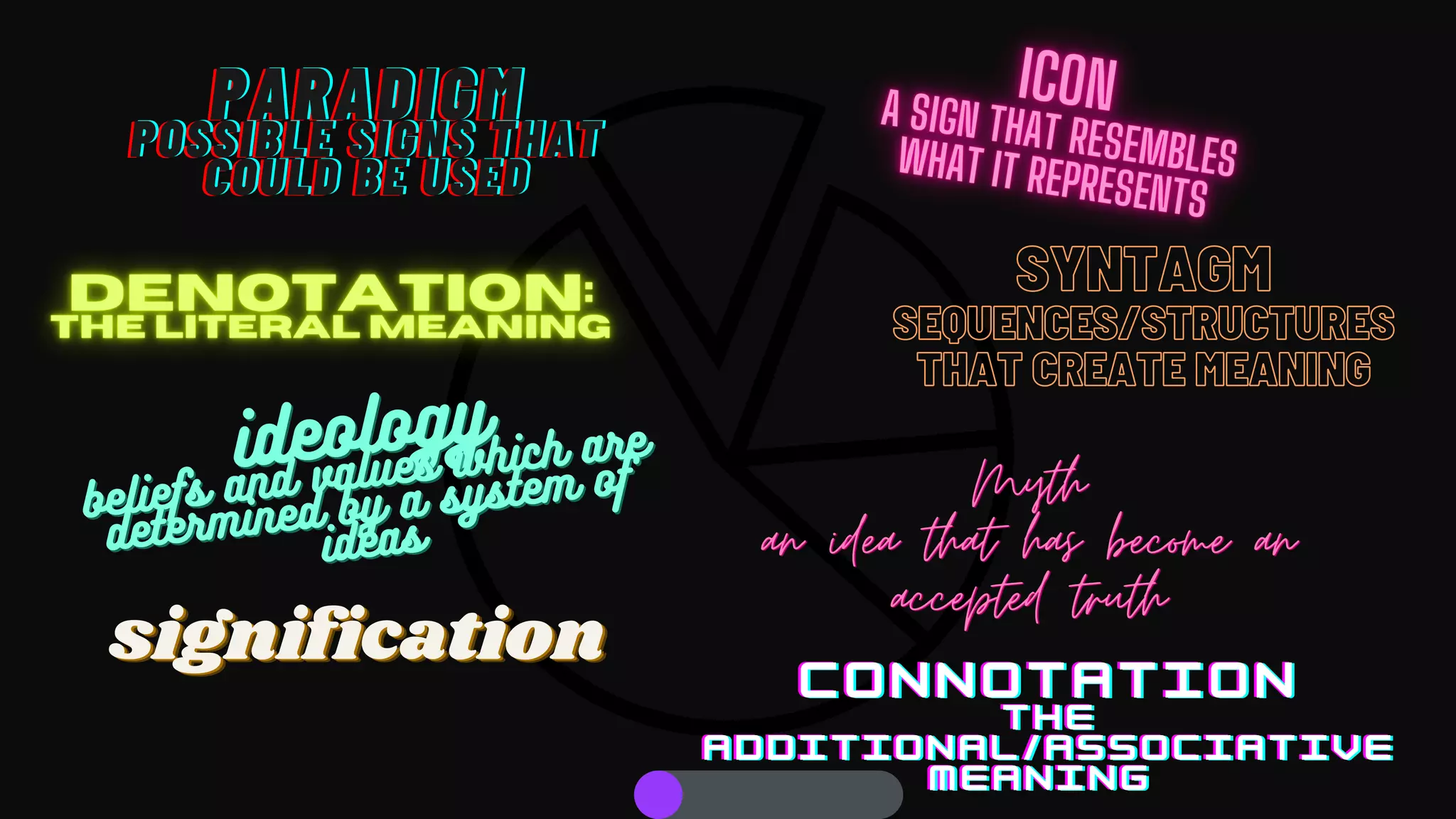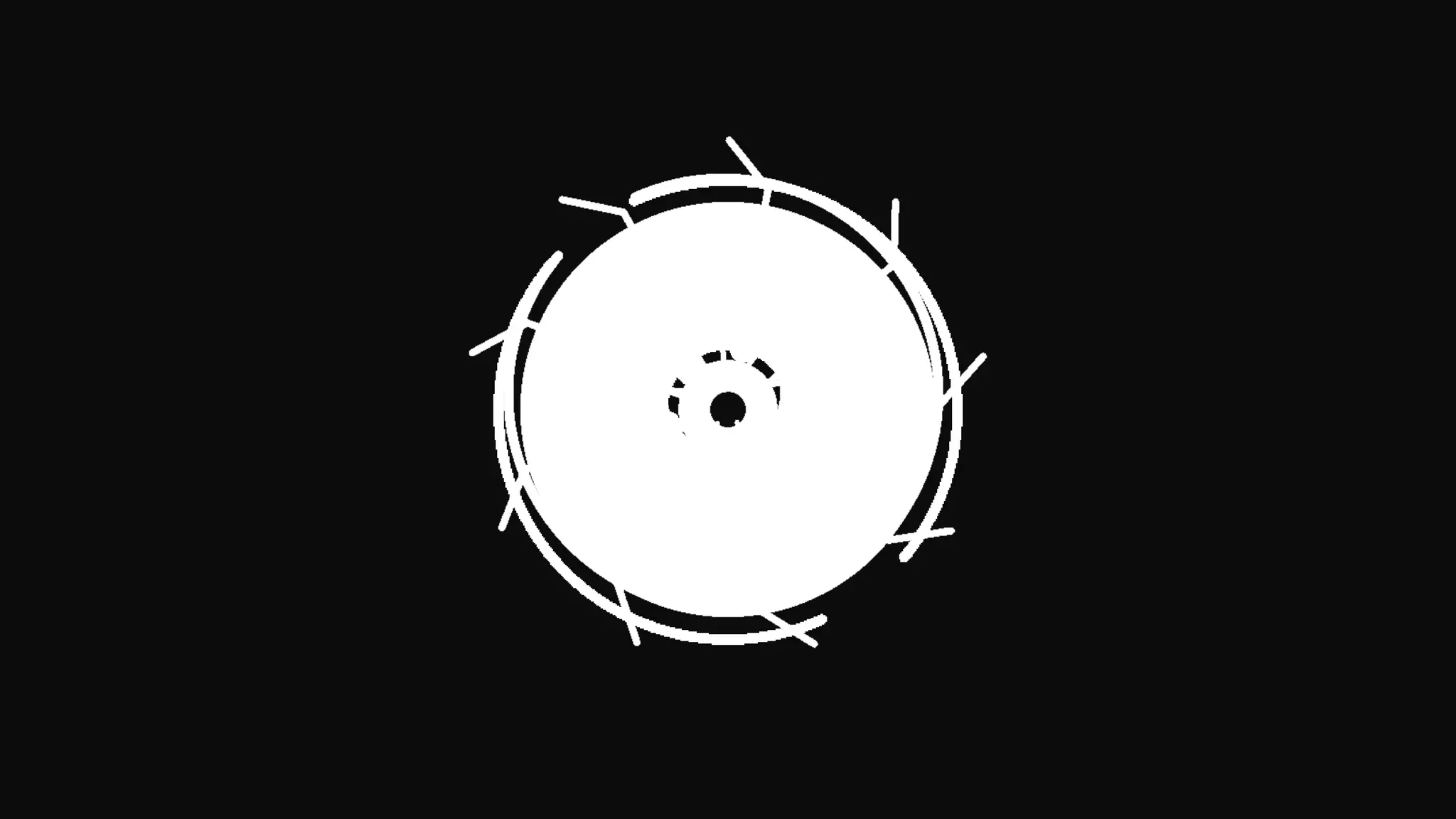The document discusses various technical and symbolic codes used in media to convey meaning and messages. It covers techniques like camera shots, lighting, settings, costumes, props, and symbolism related to things like color, weather, and animals. Technical codes discussed include shot types like close-ups, establishing shots, and tracking shots. Symbolic codes explained include things like the meaning behind colors, locations, natural elements, and objects. The document provides examples and analysis of how these different techniques and symbols are used to add deeper layers of meaning.
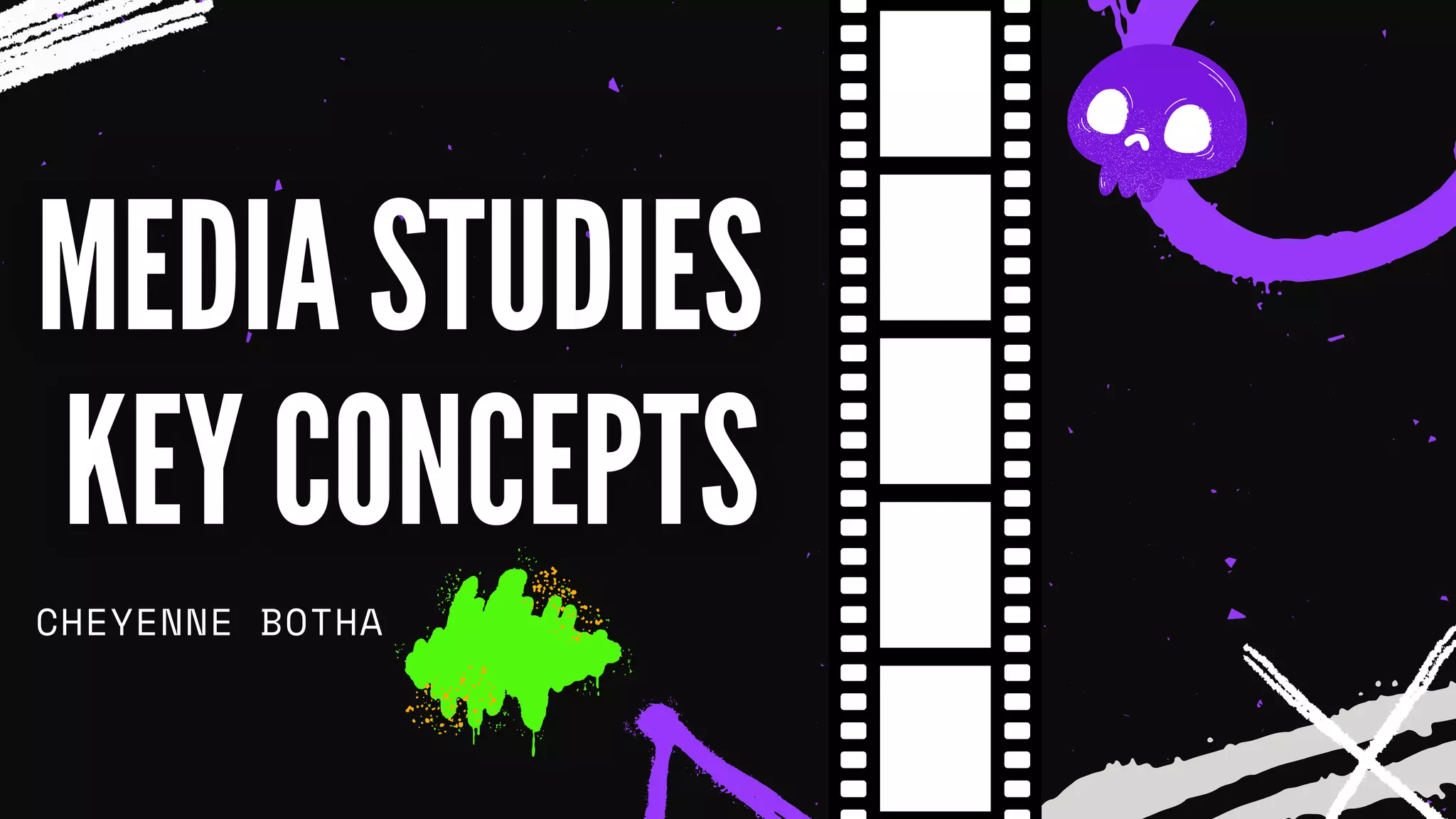

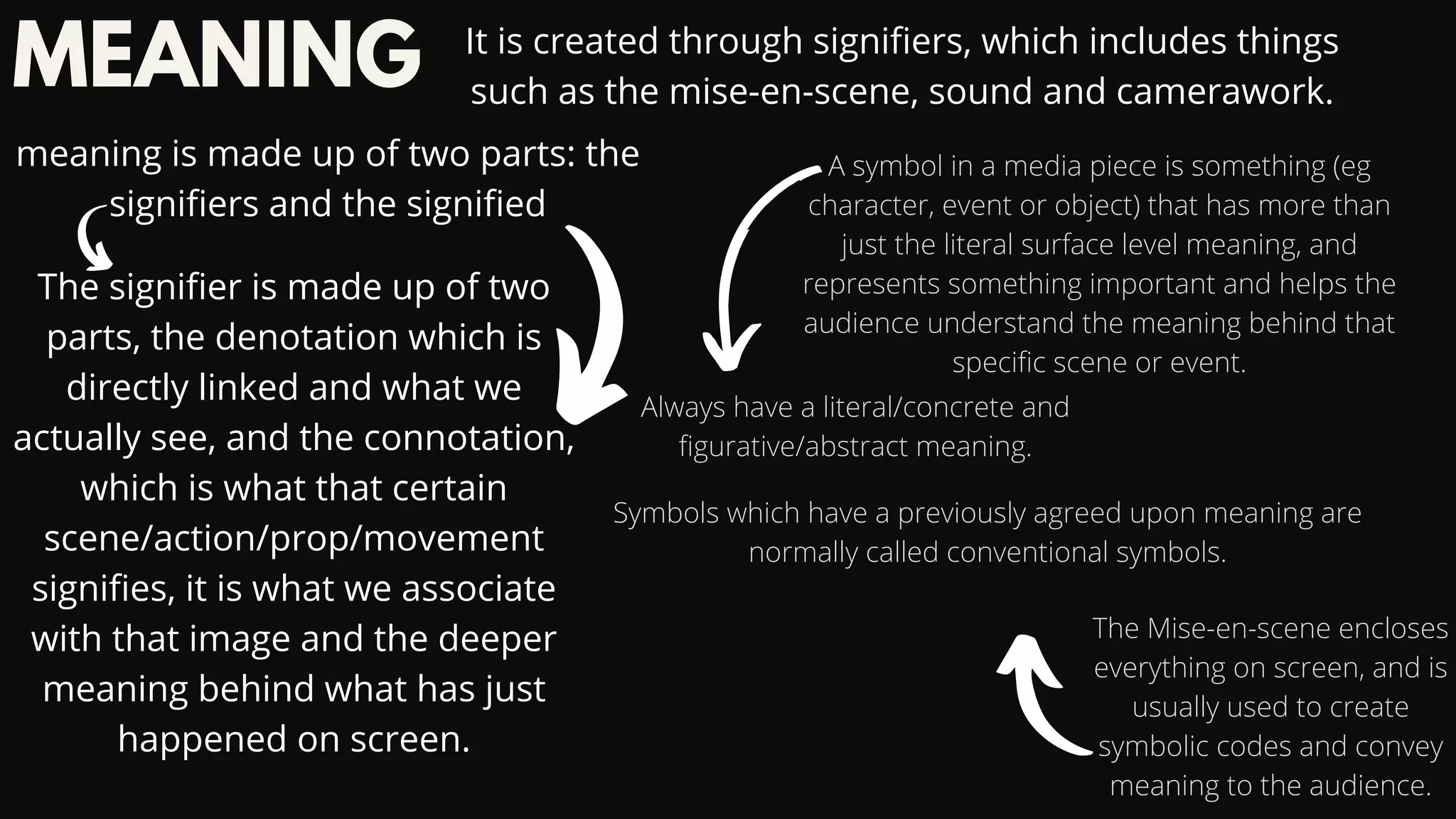
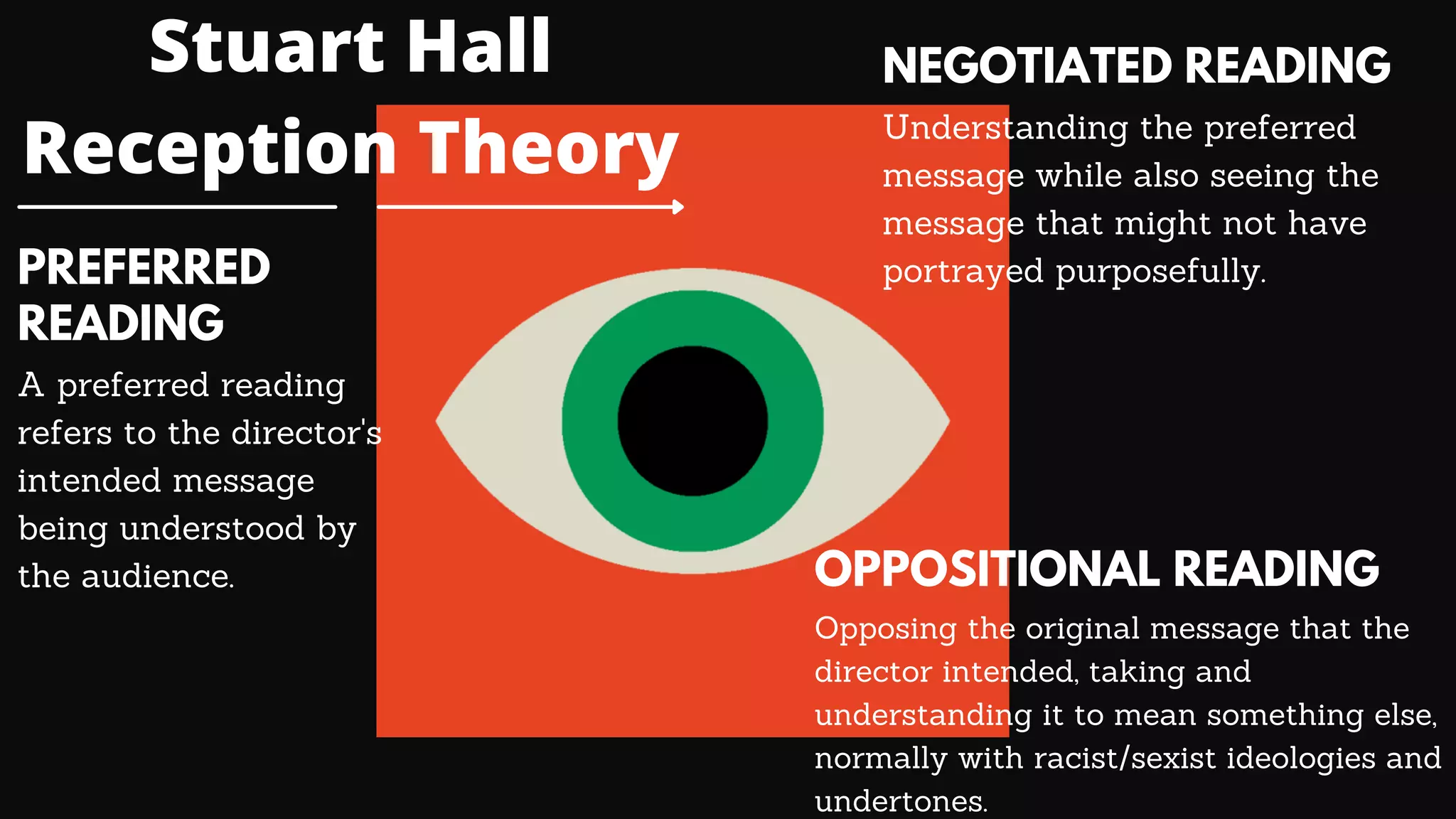
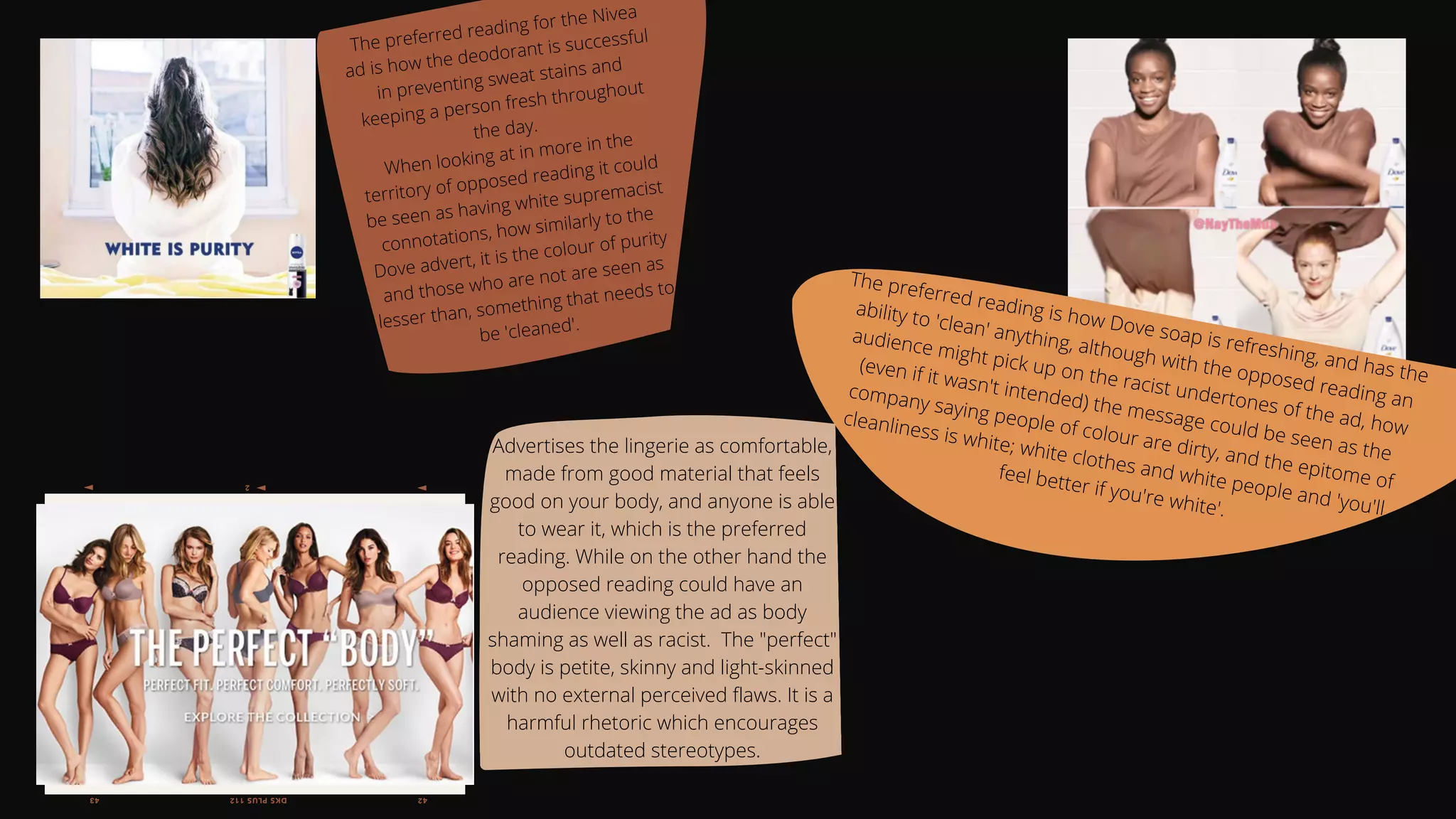


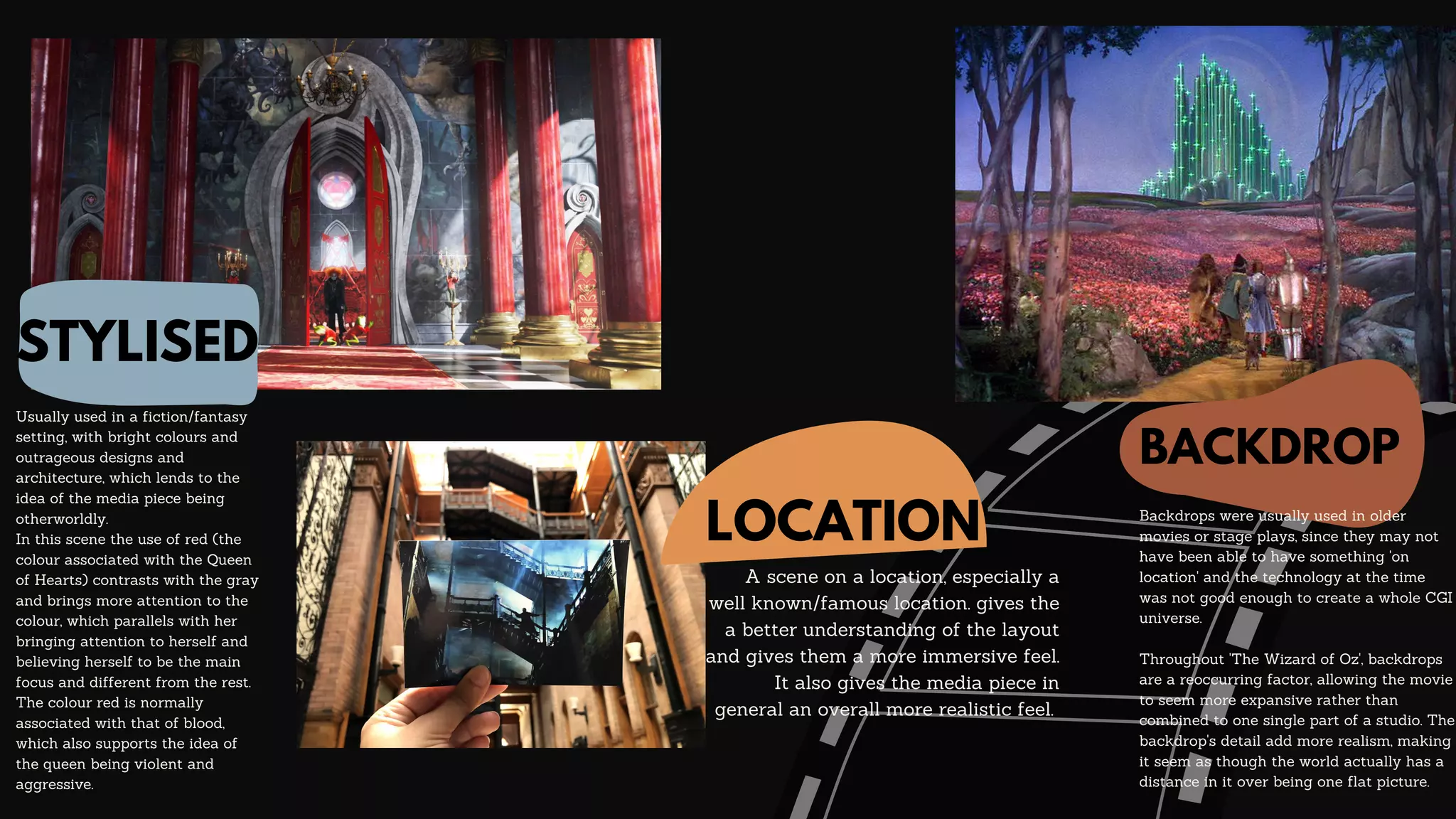
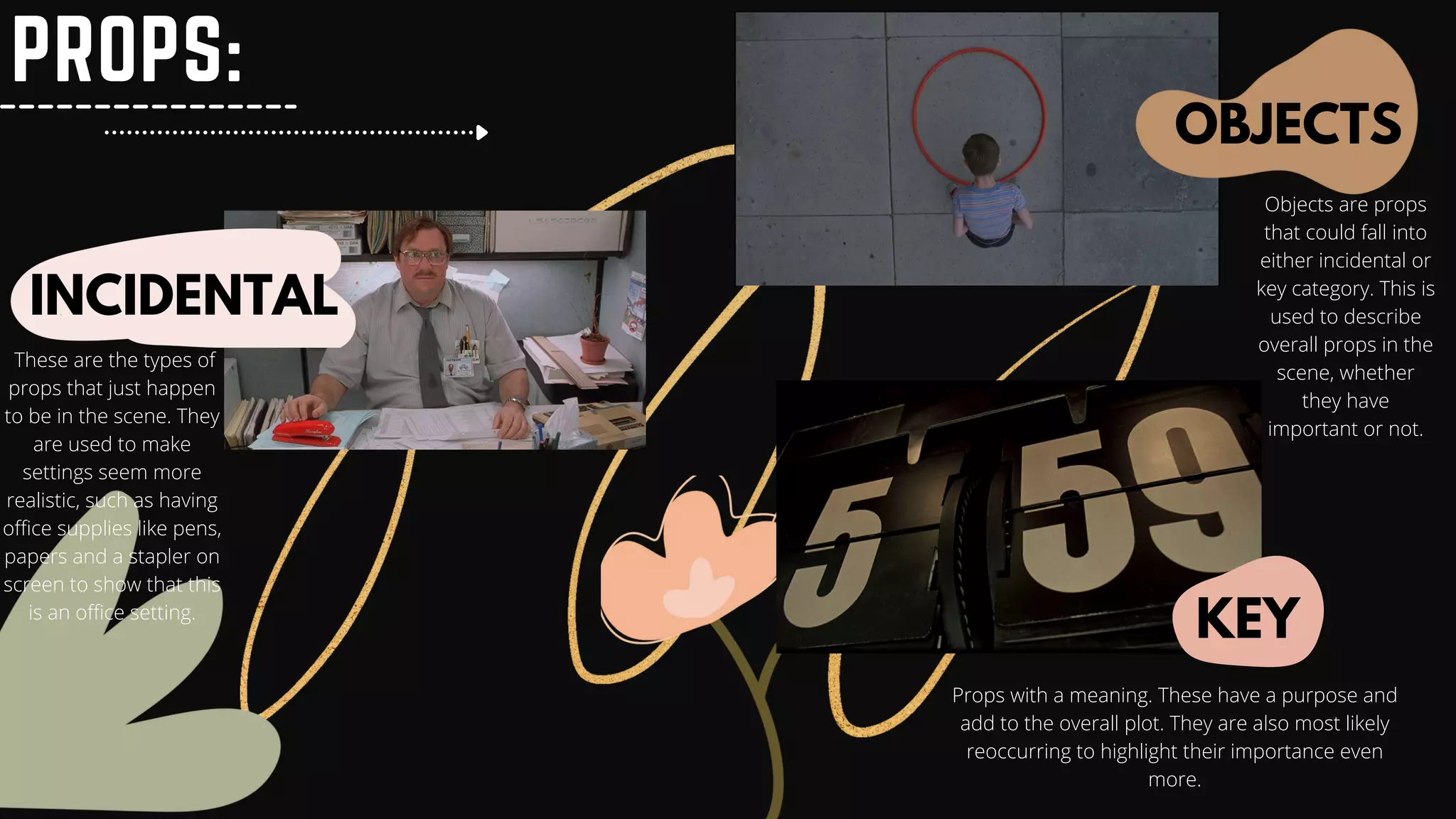
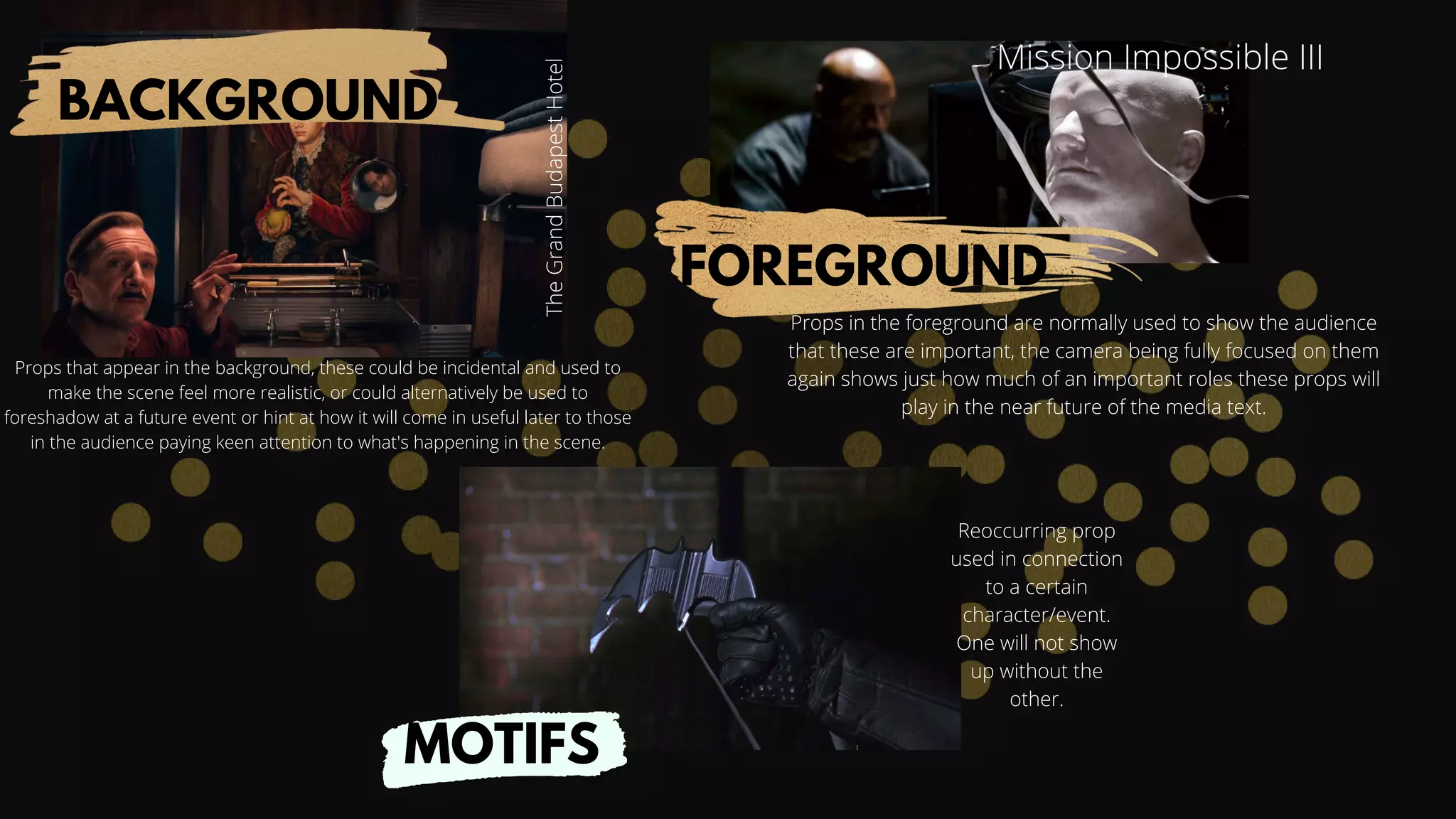
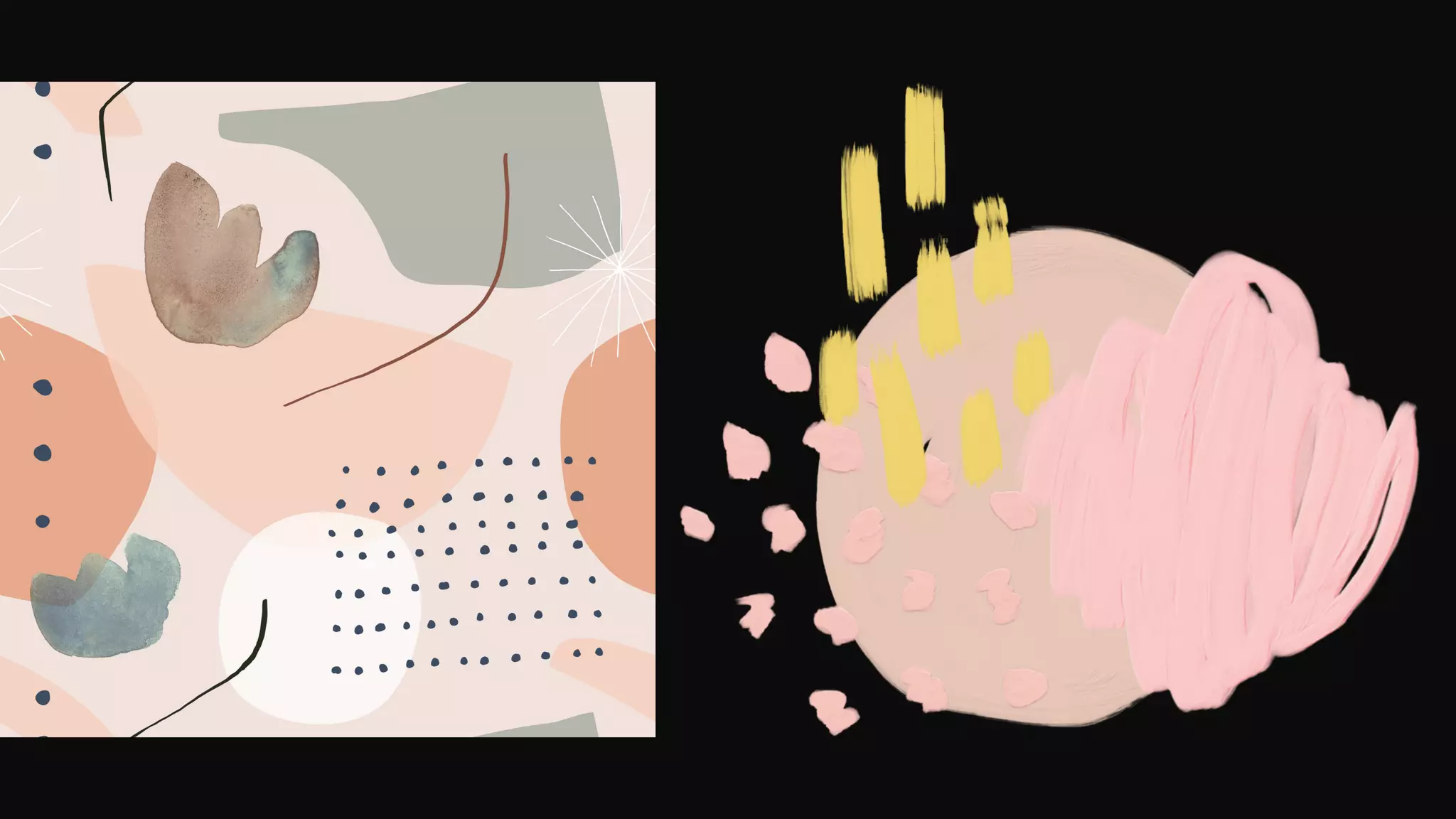
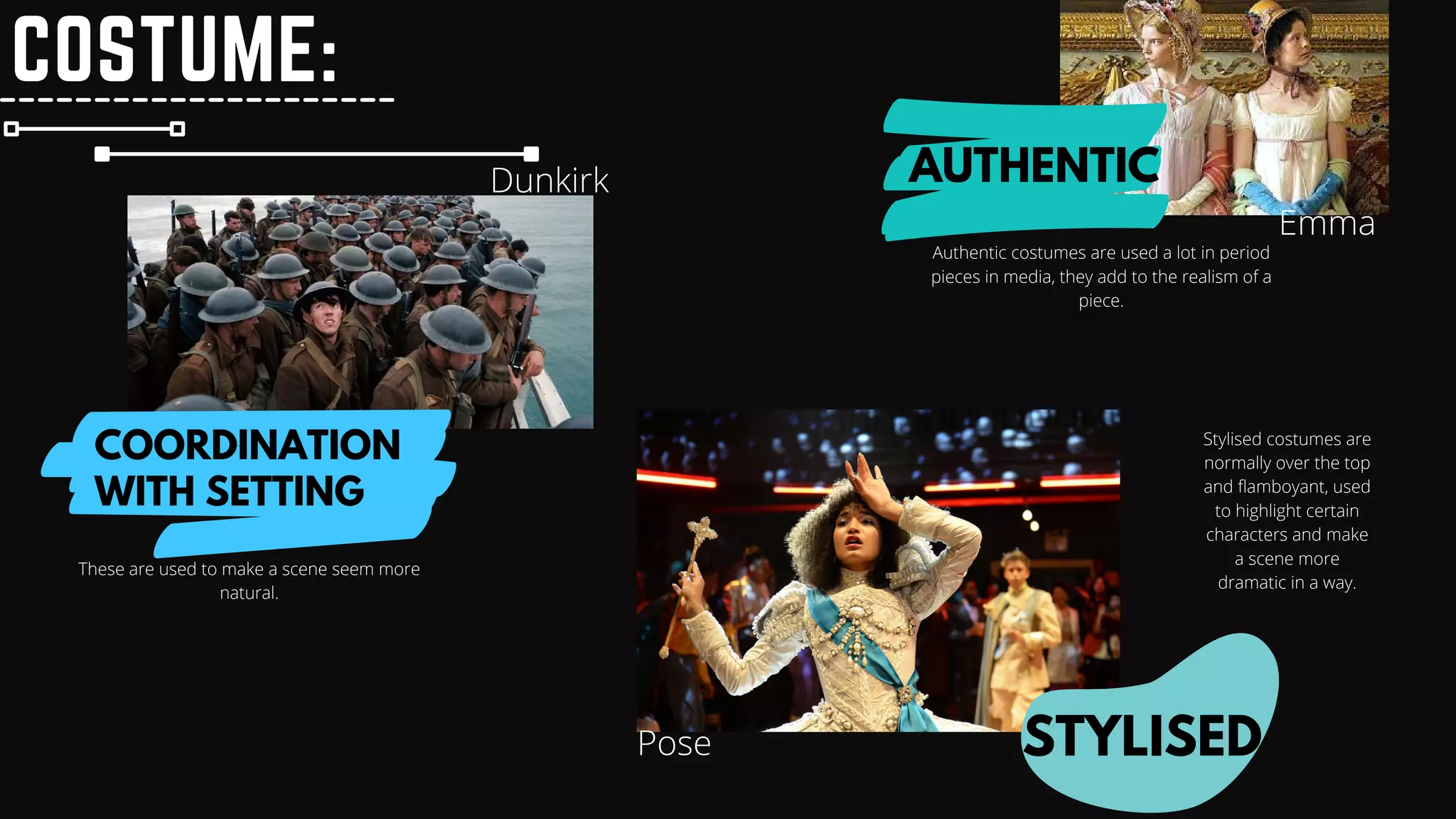
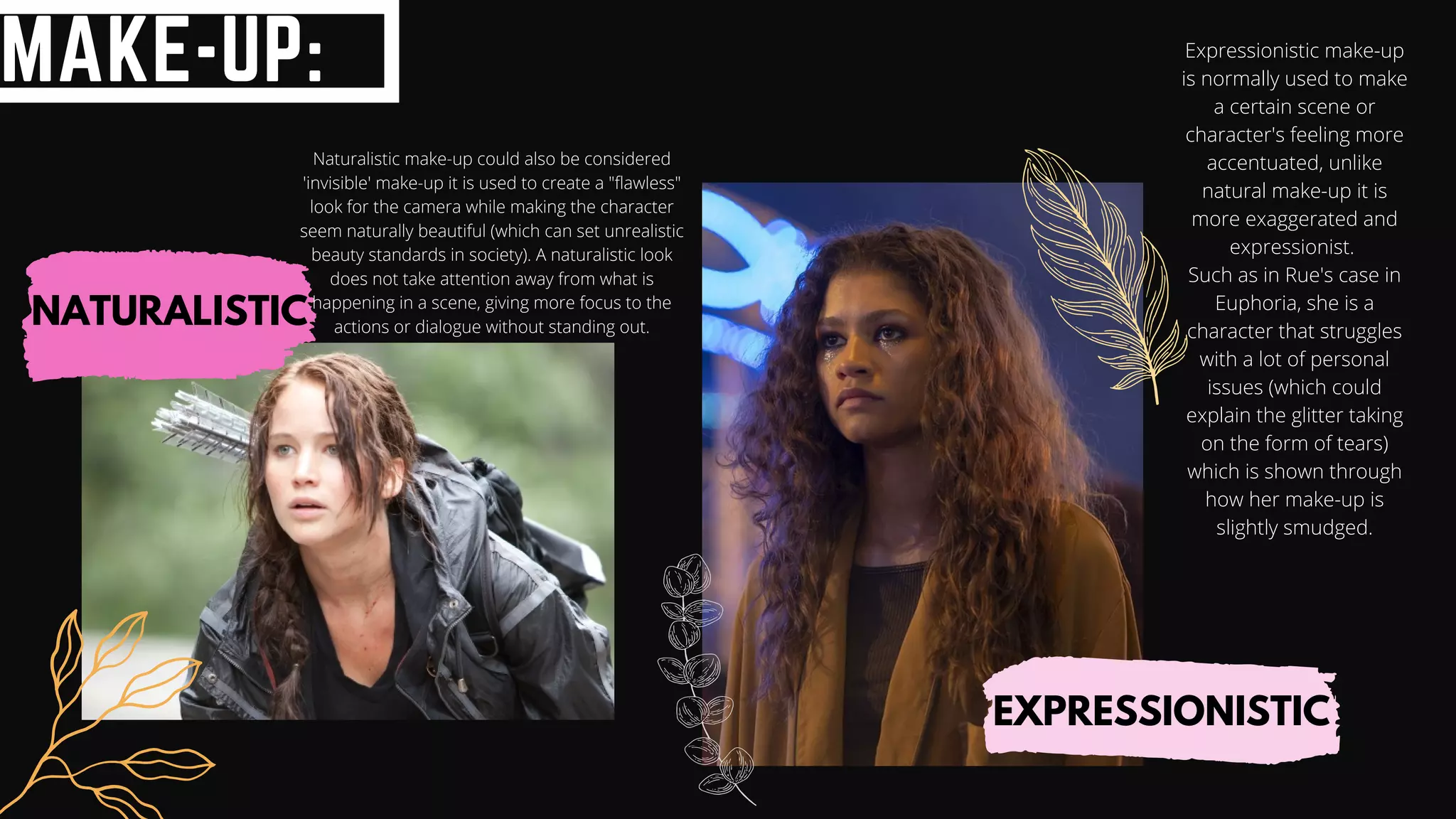

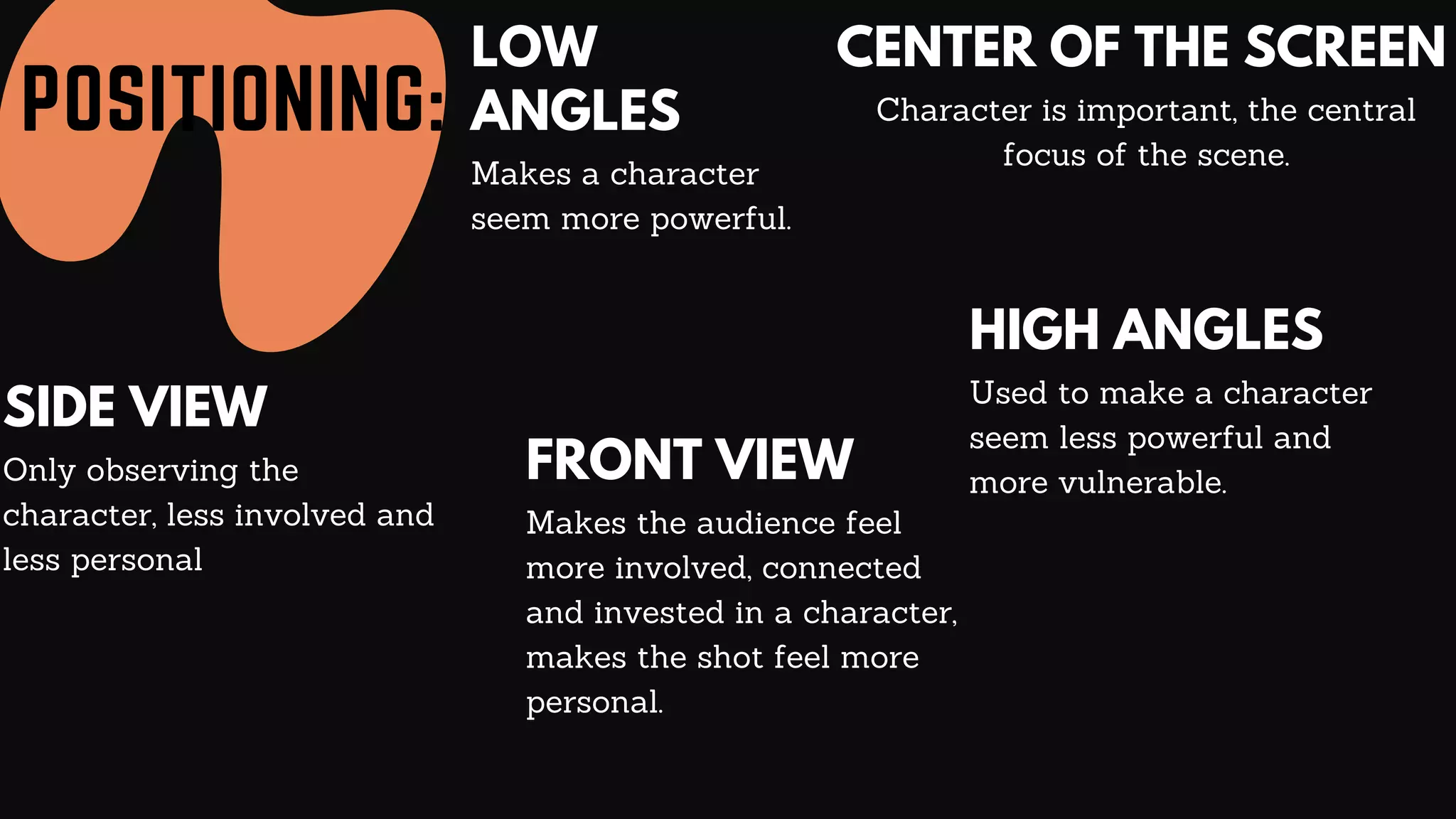
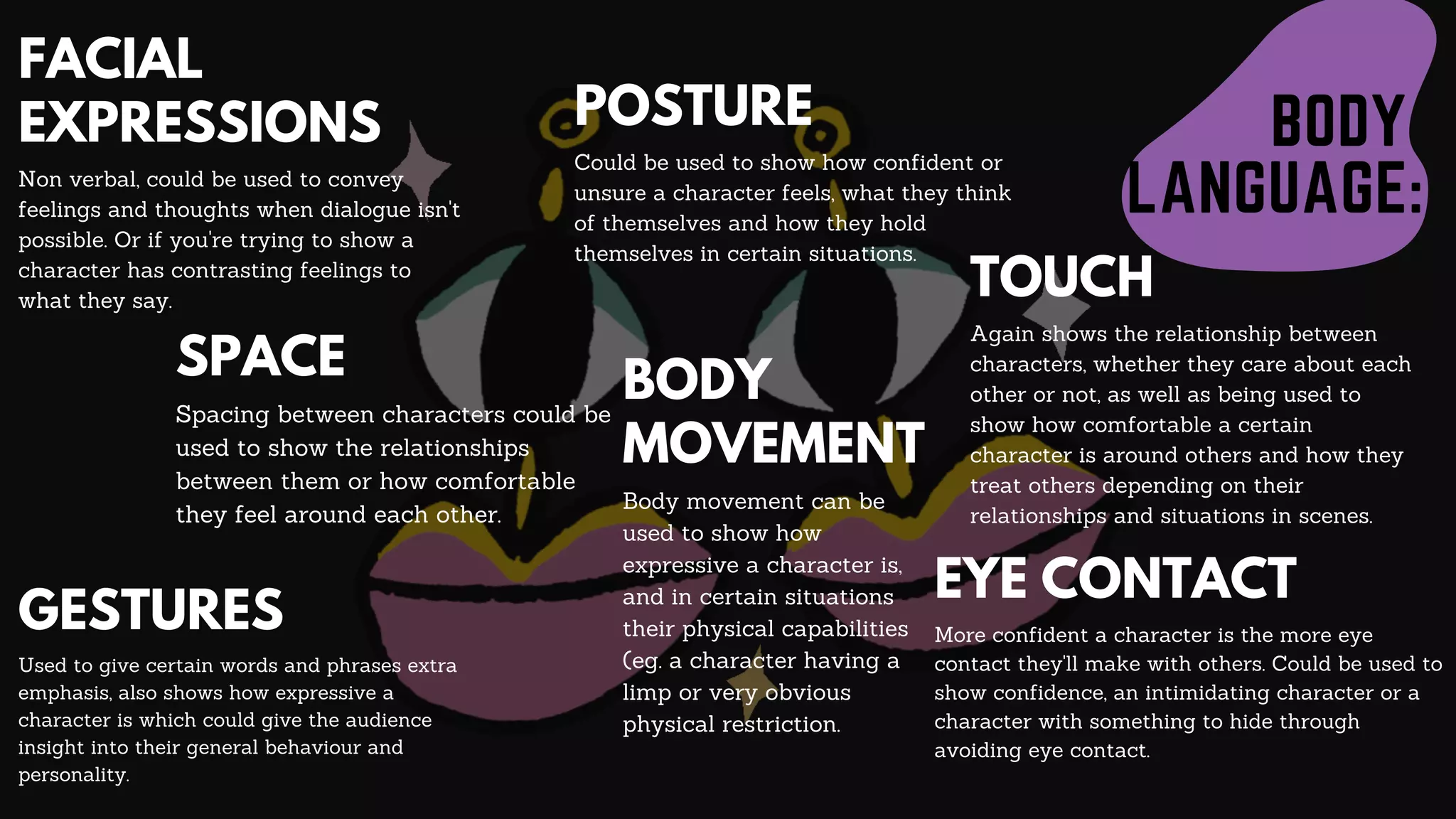

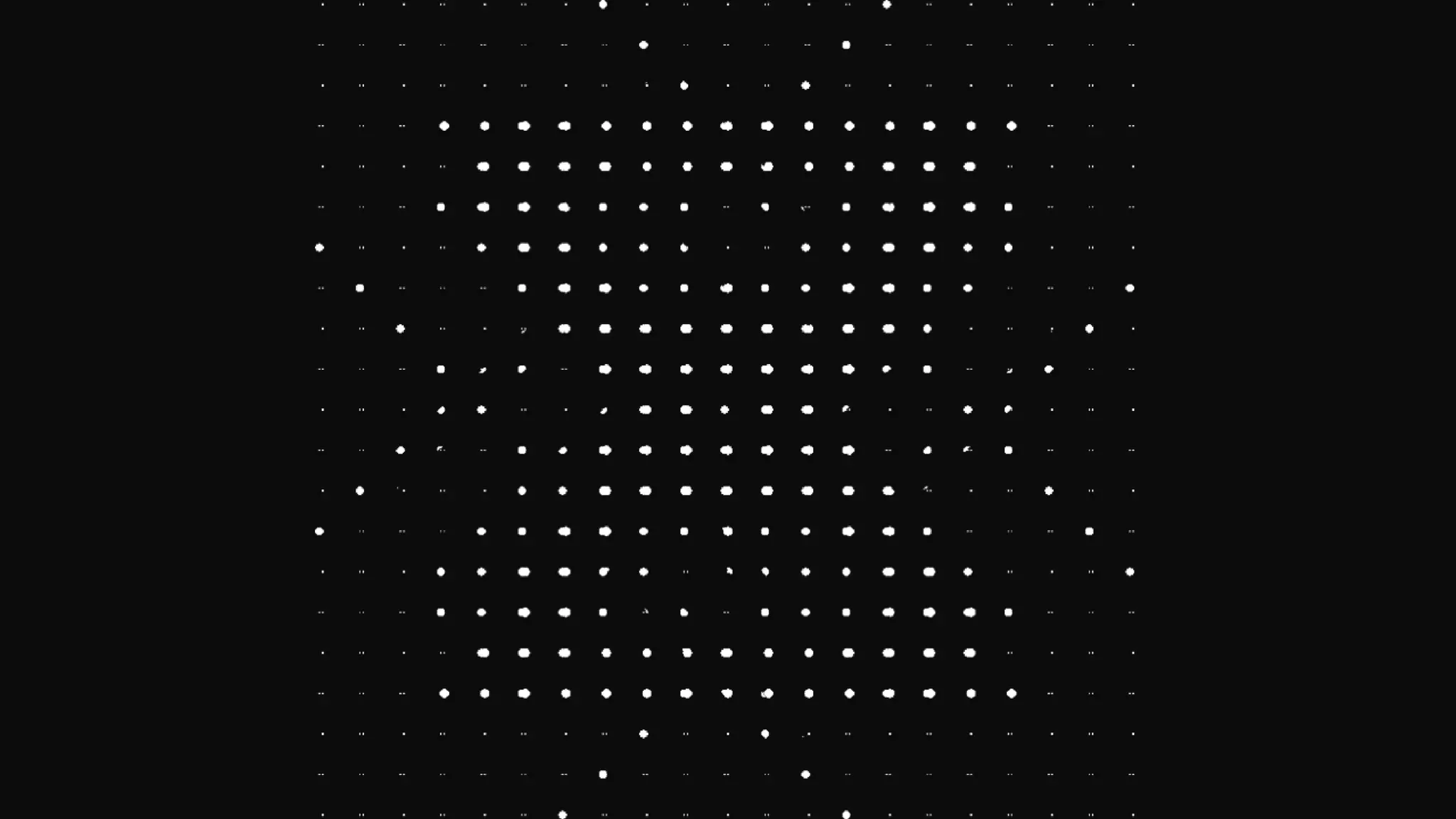

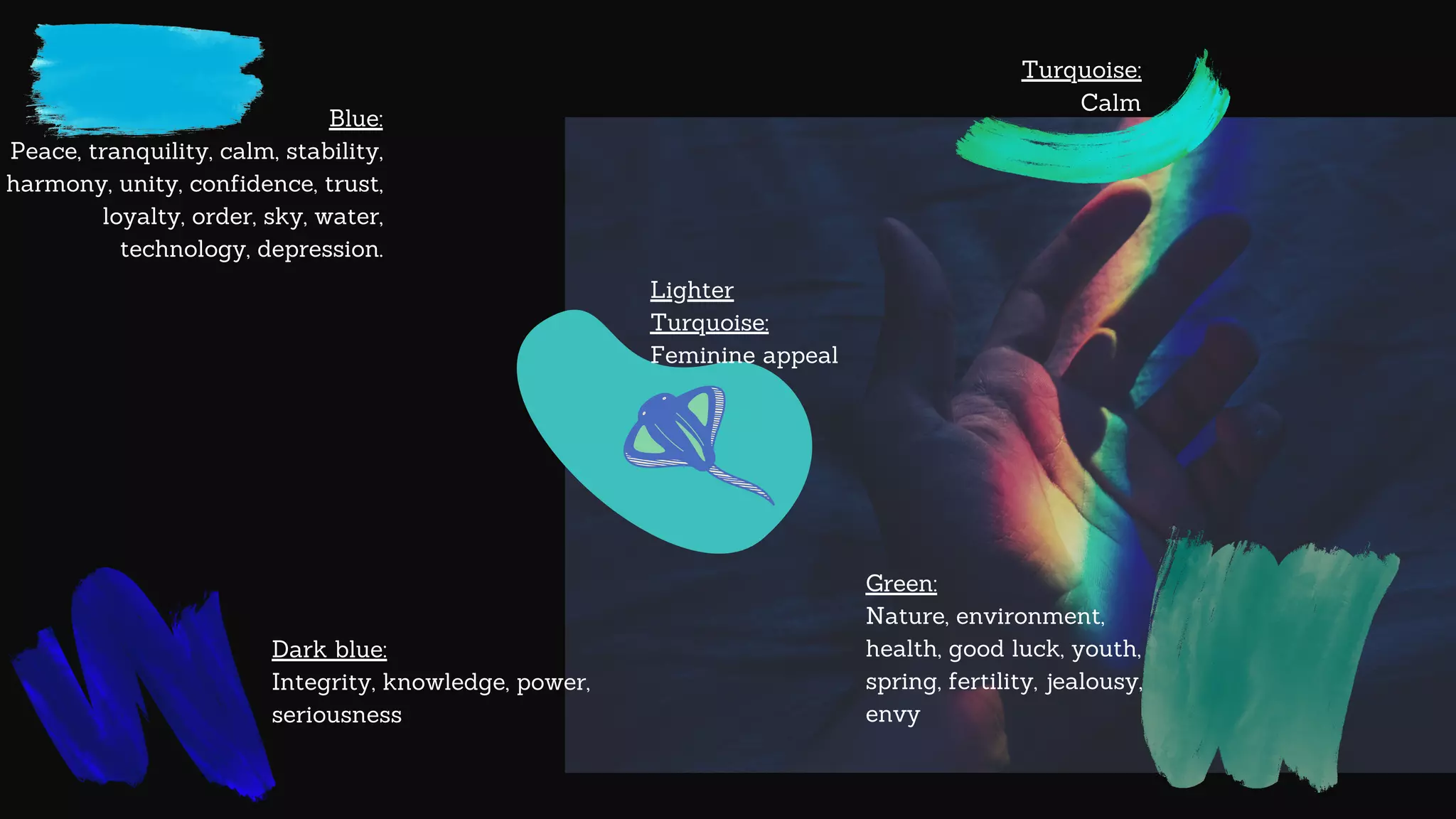
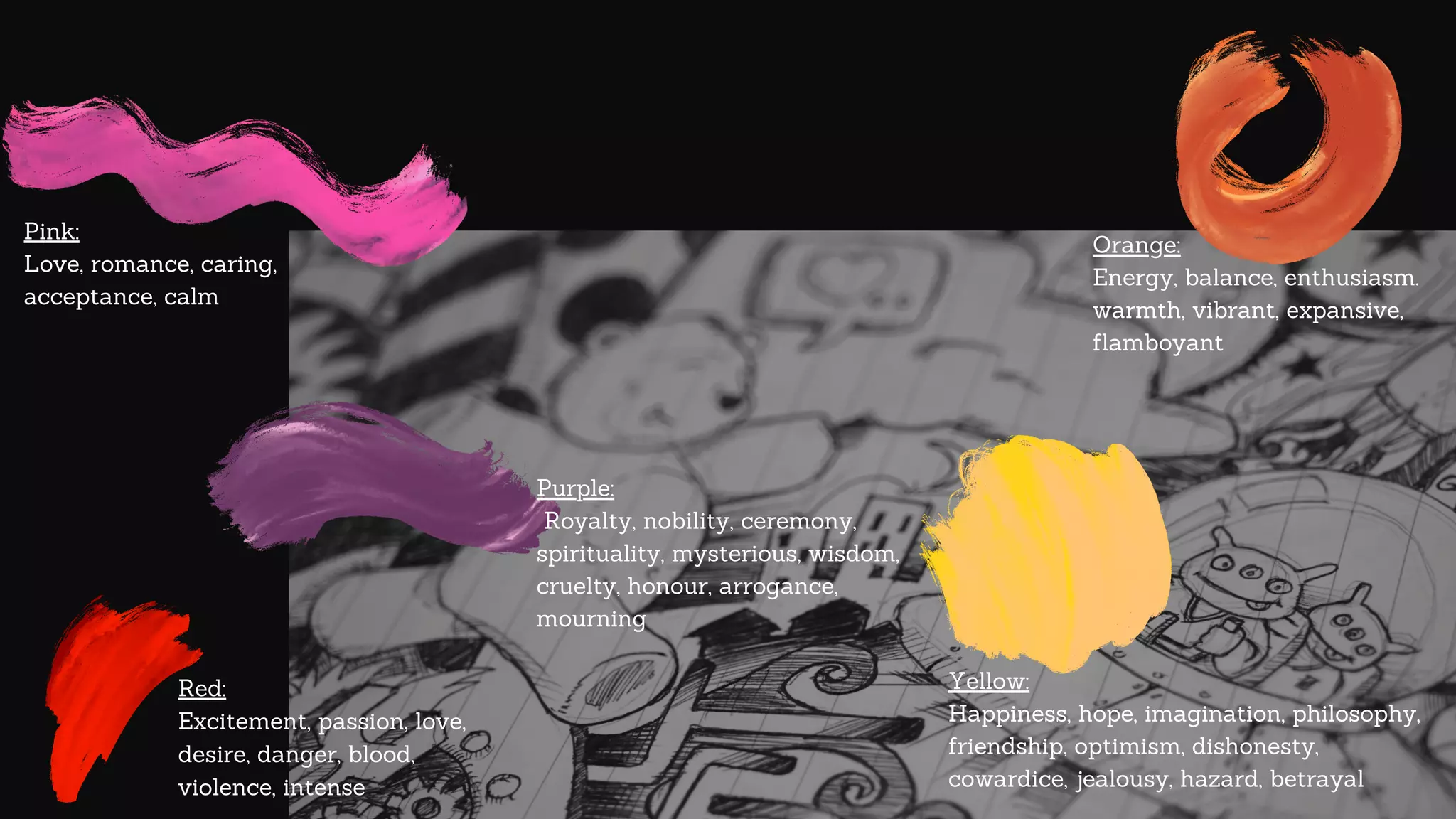
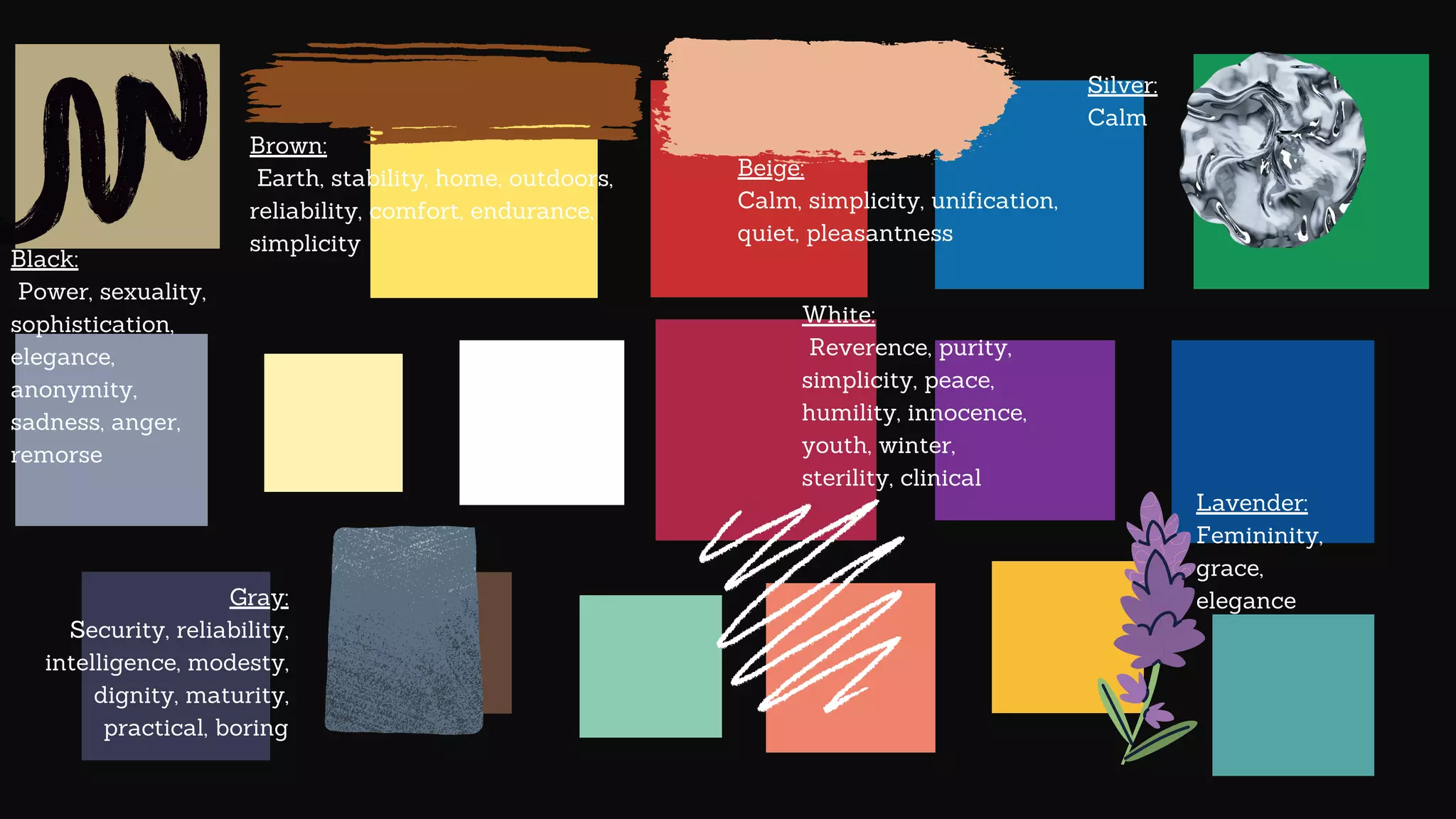
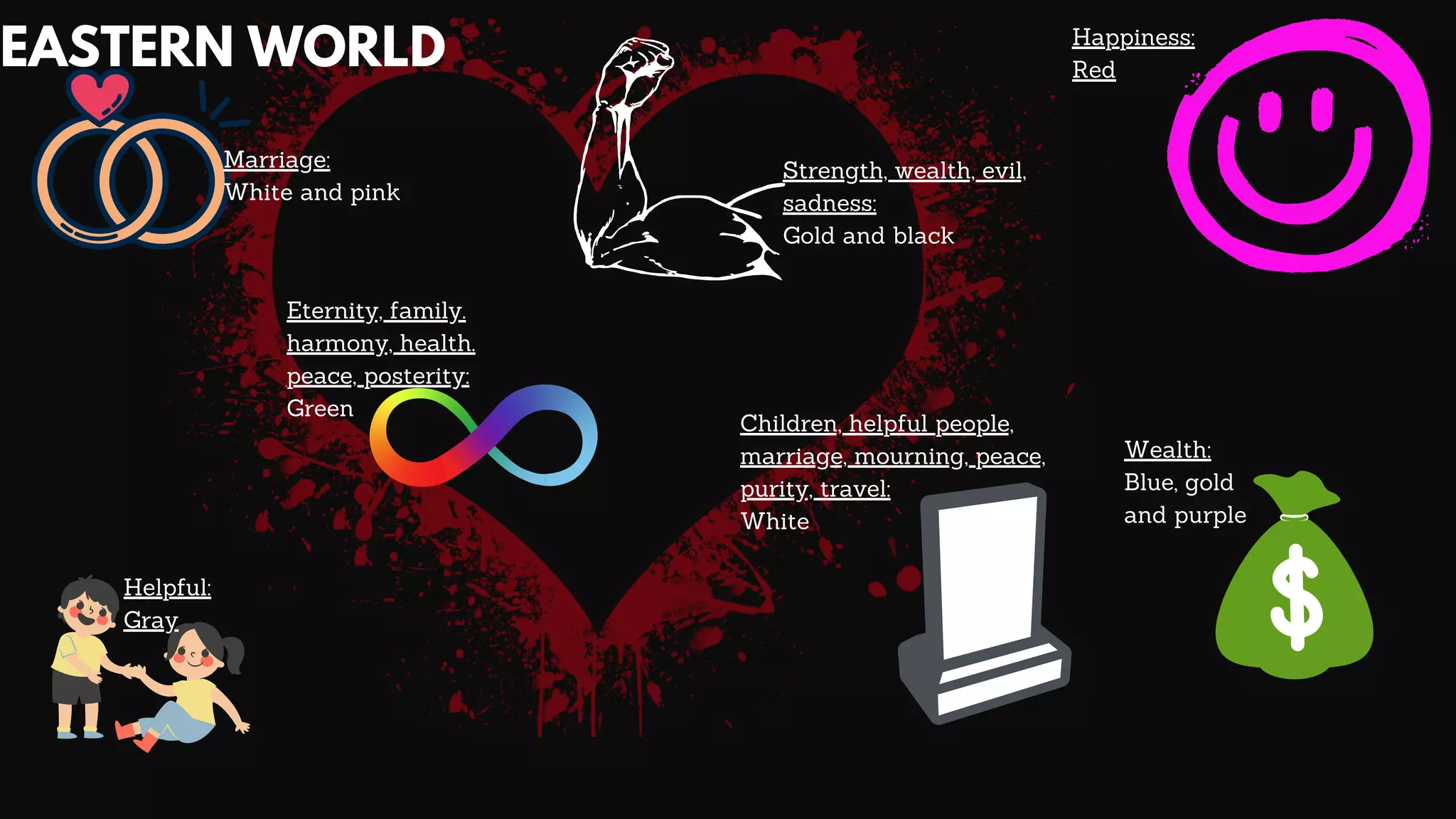
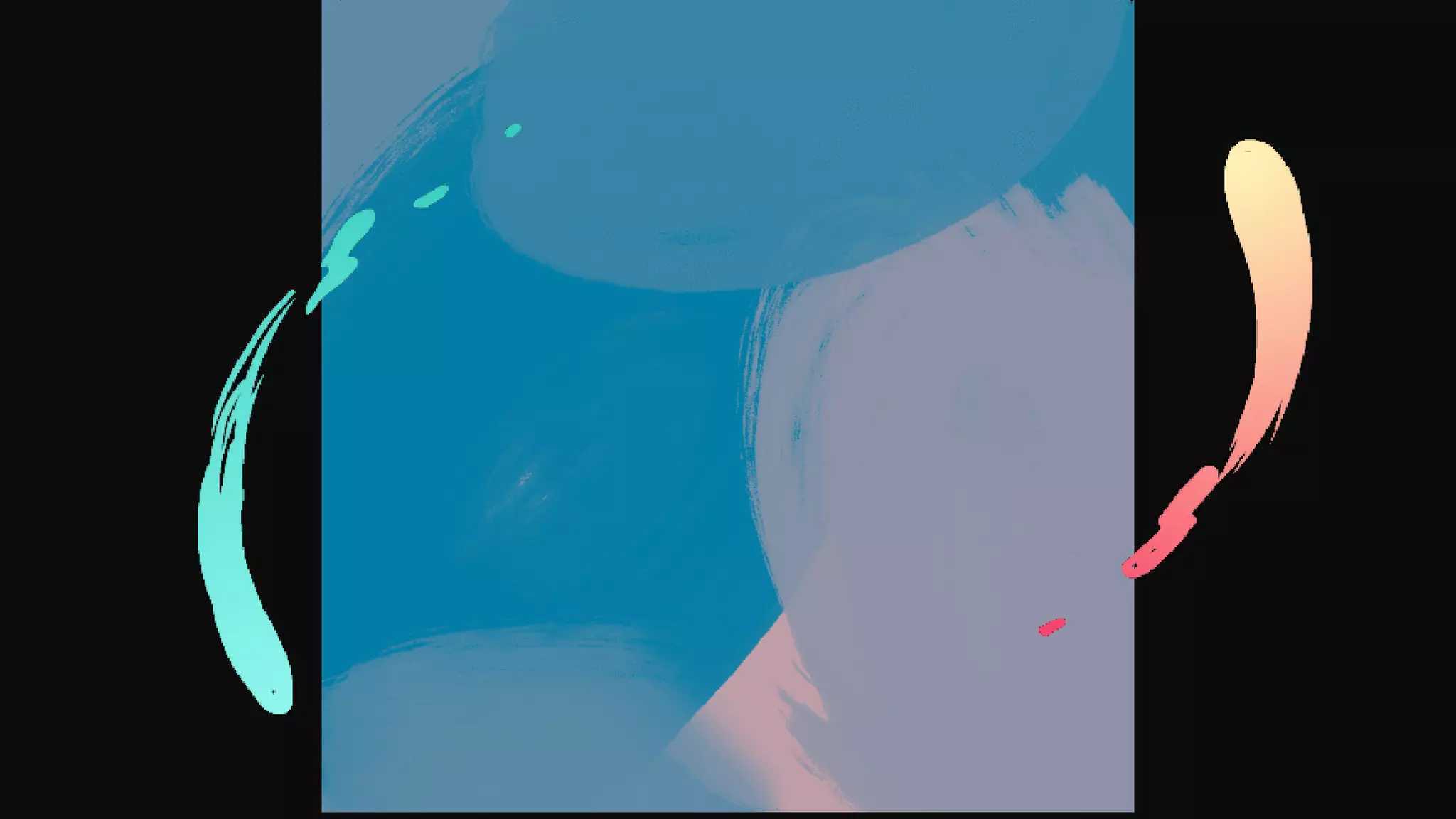
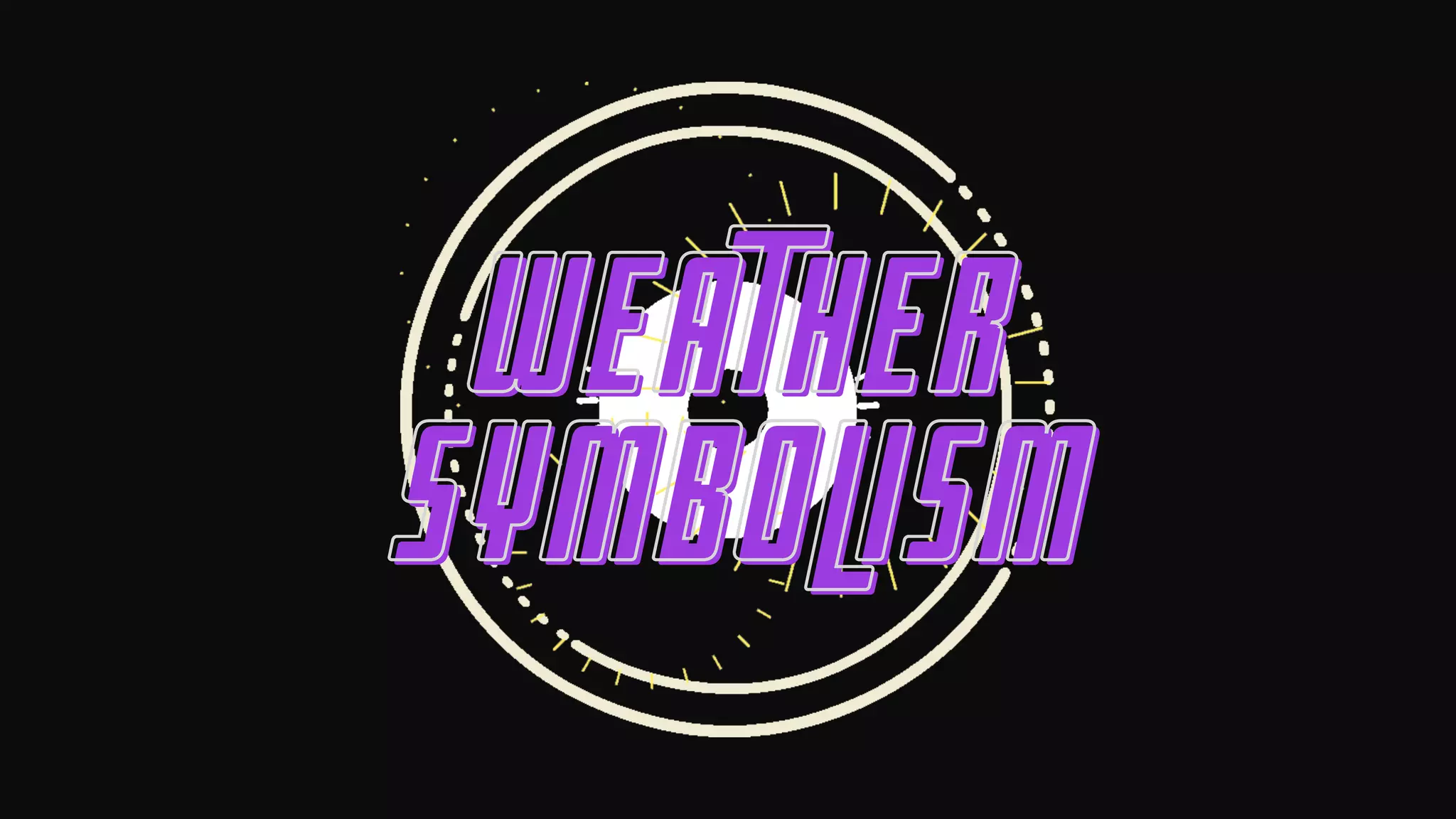
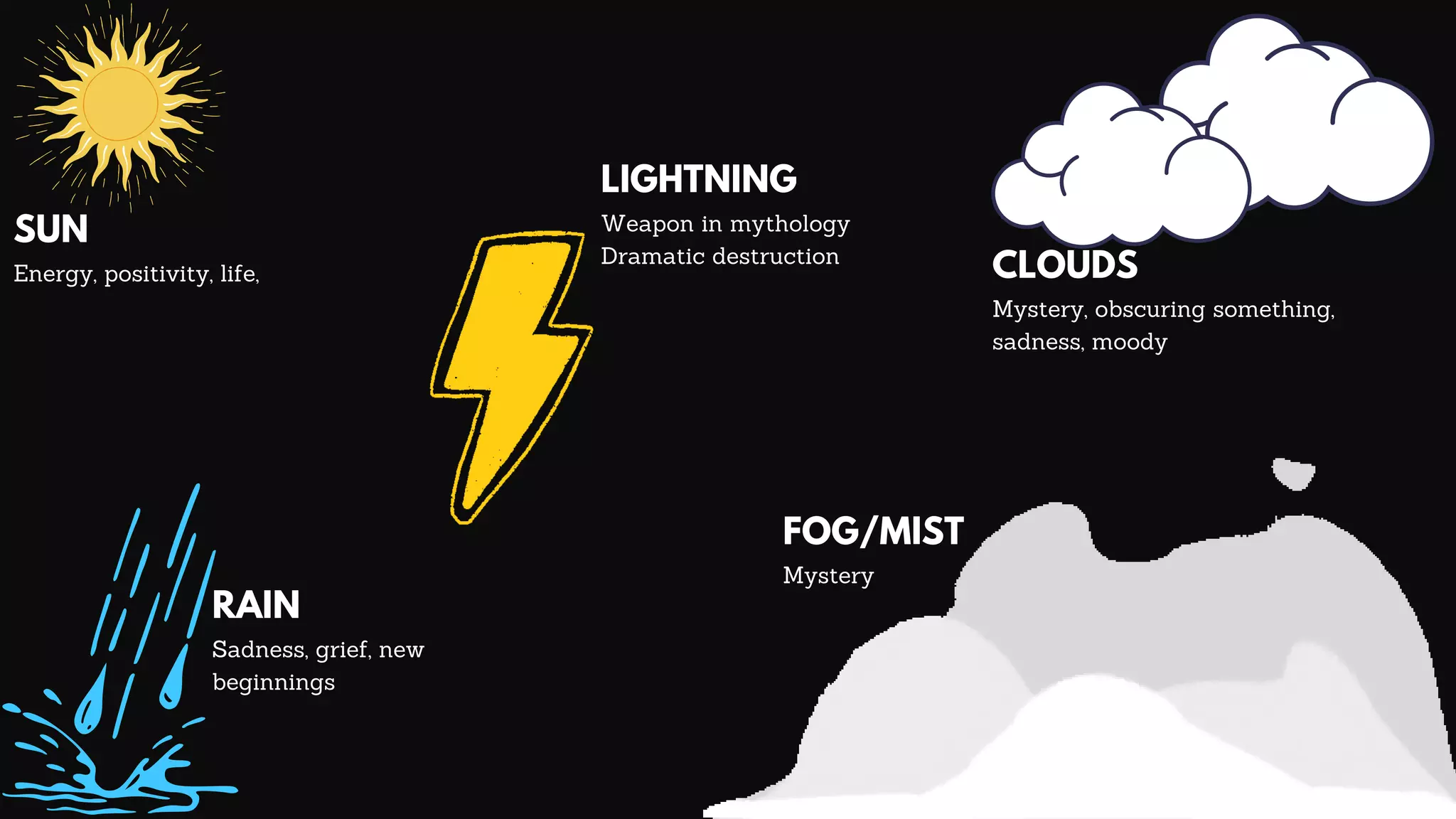
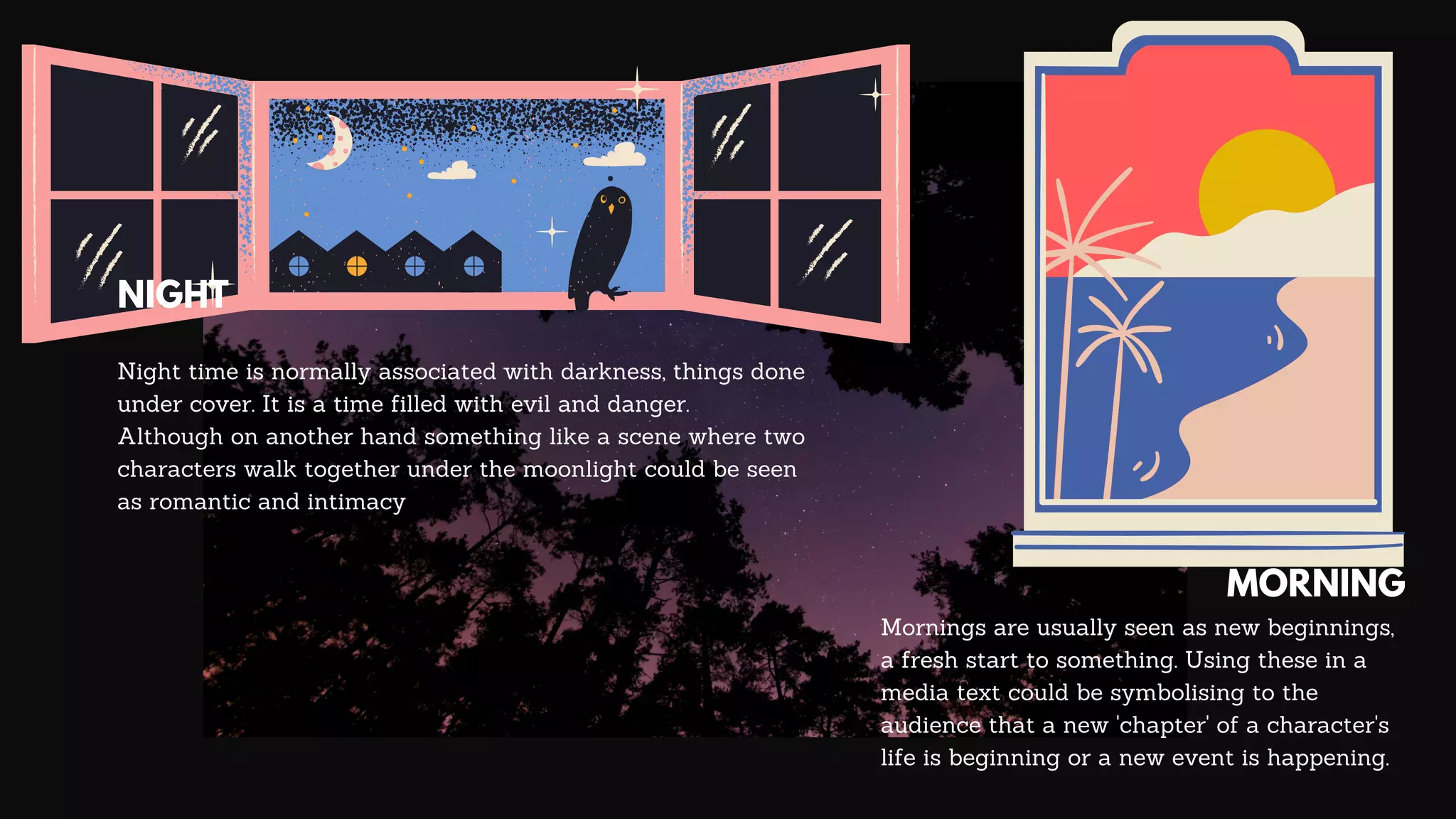
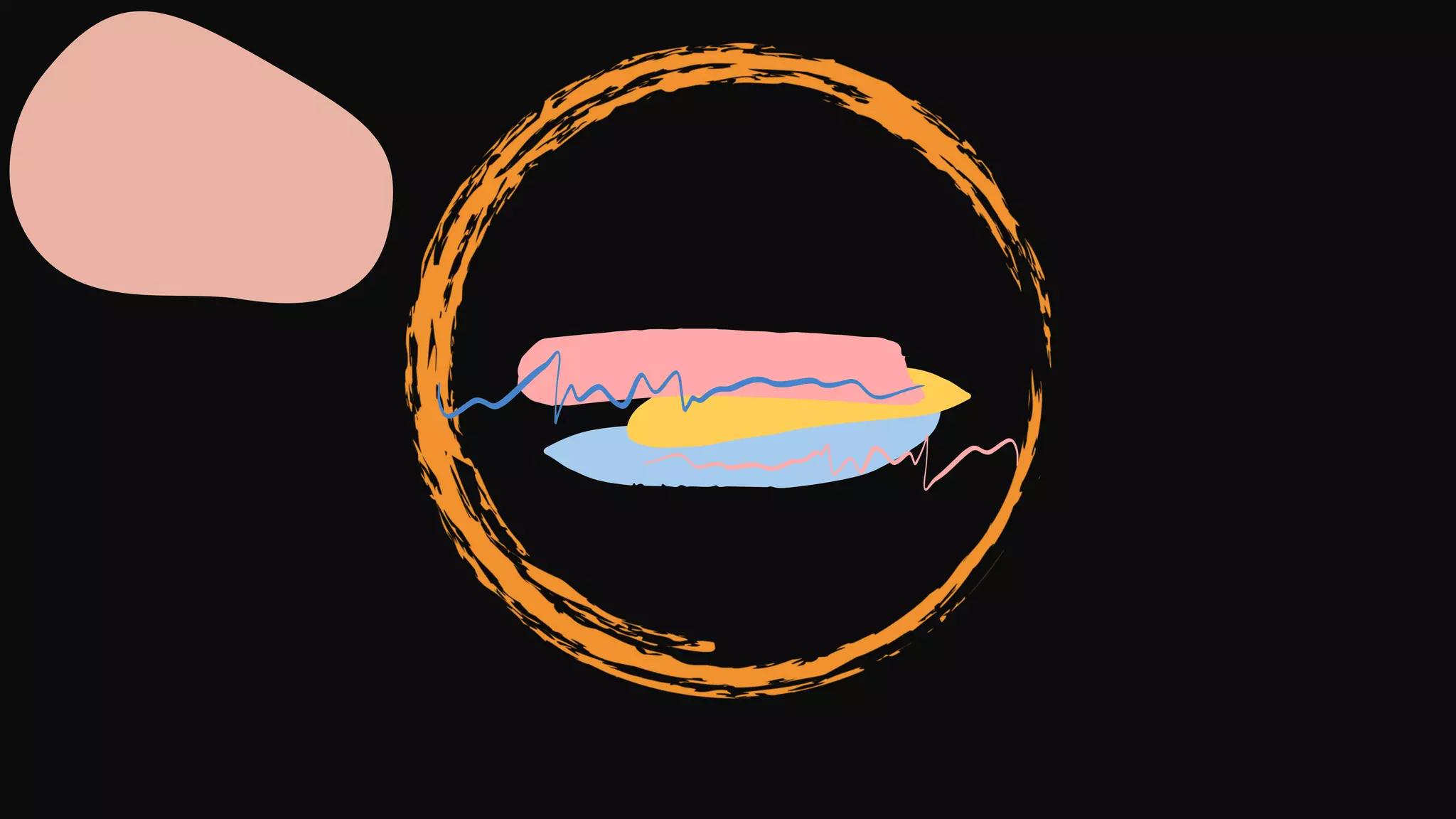

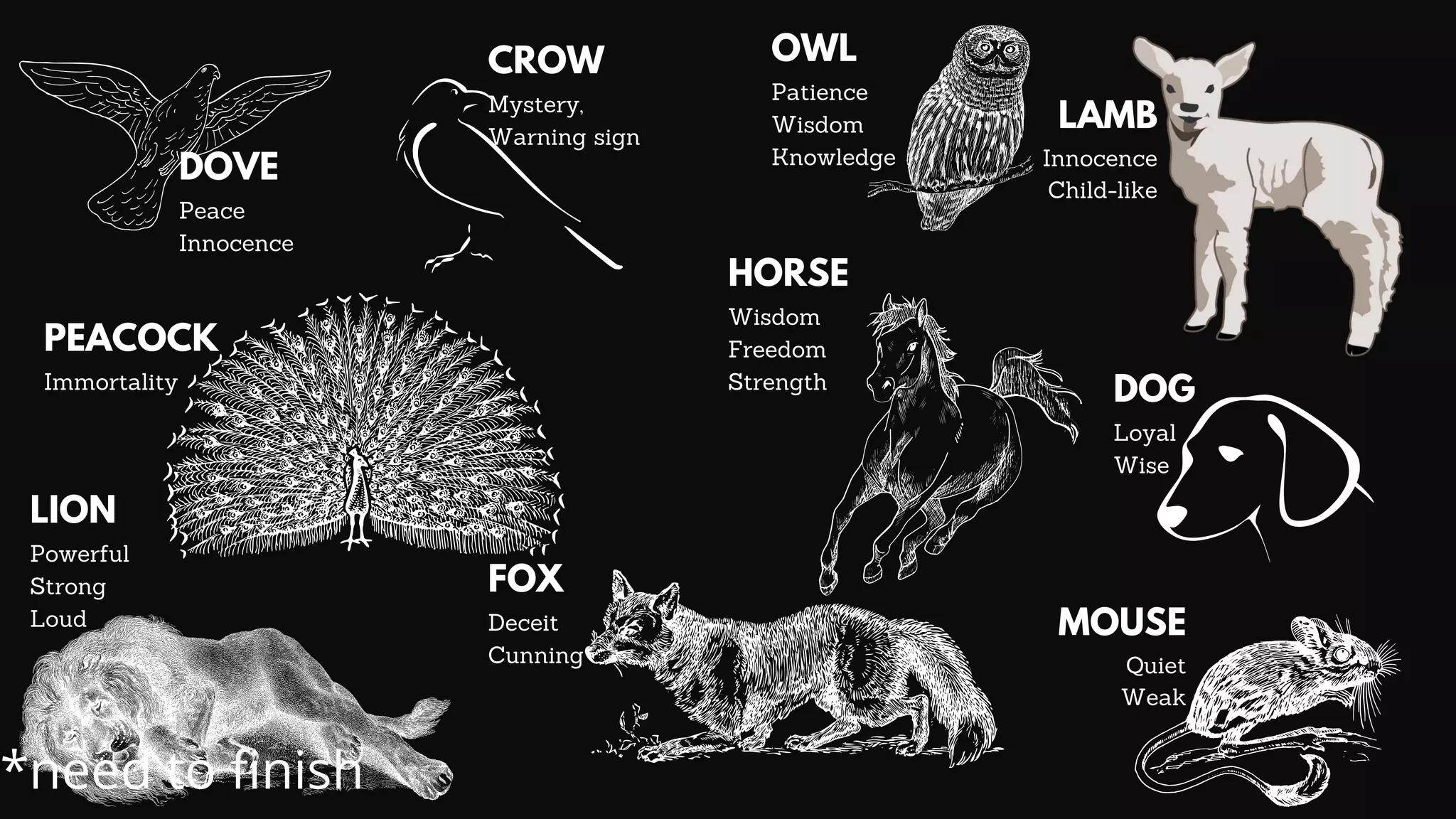
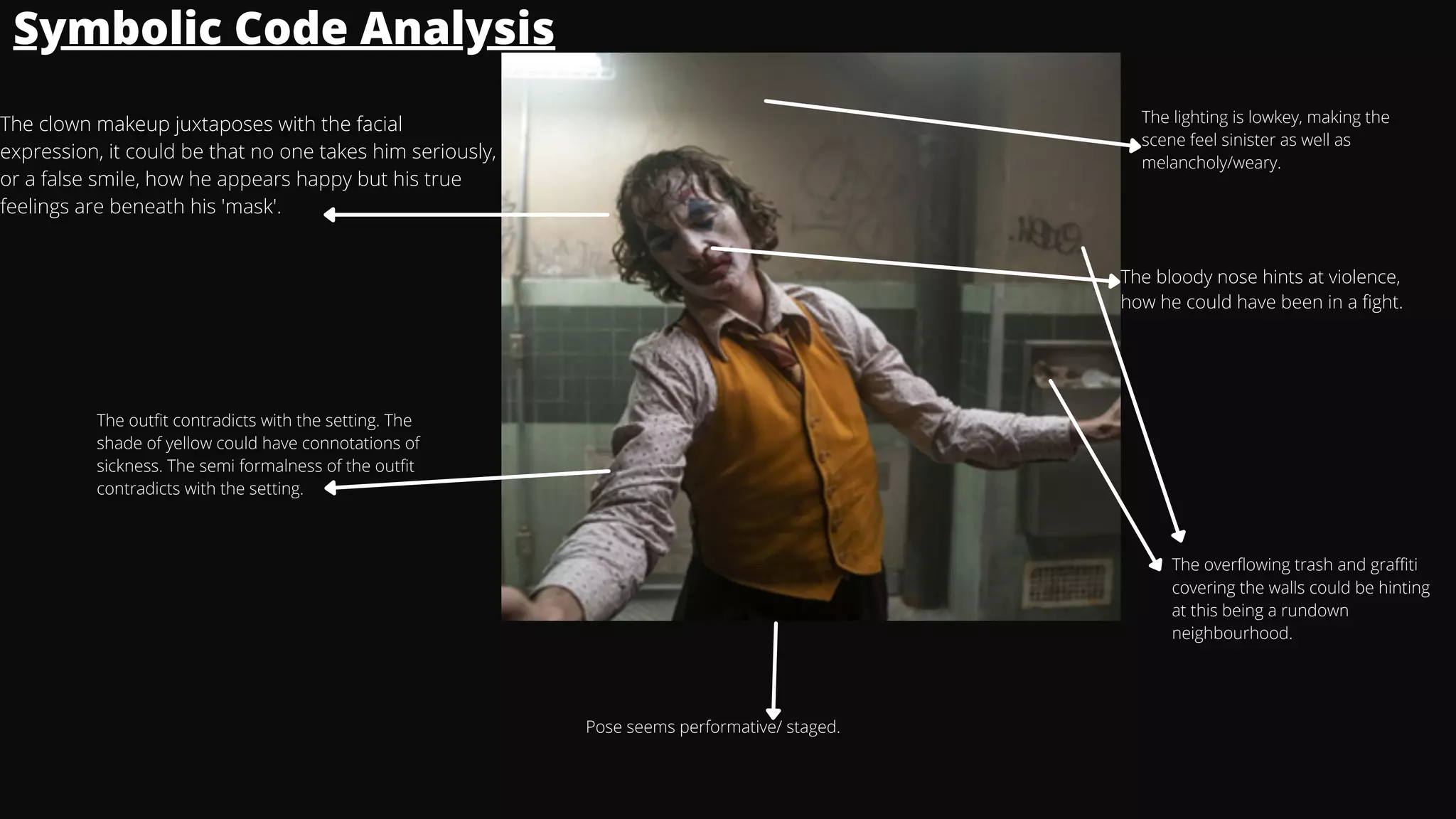

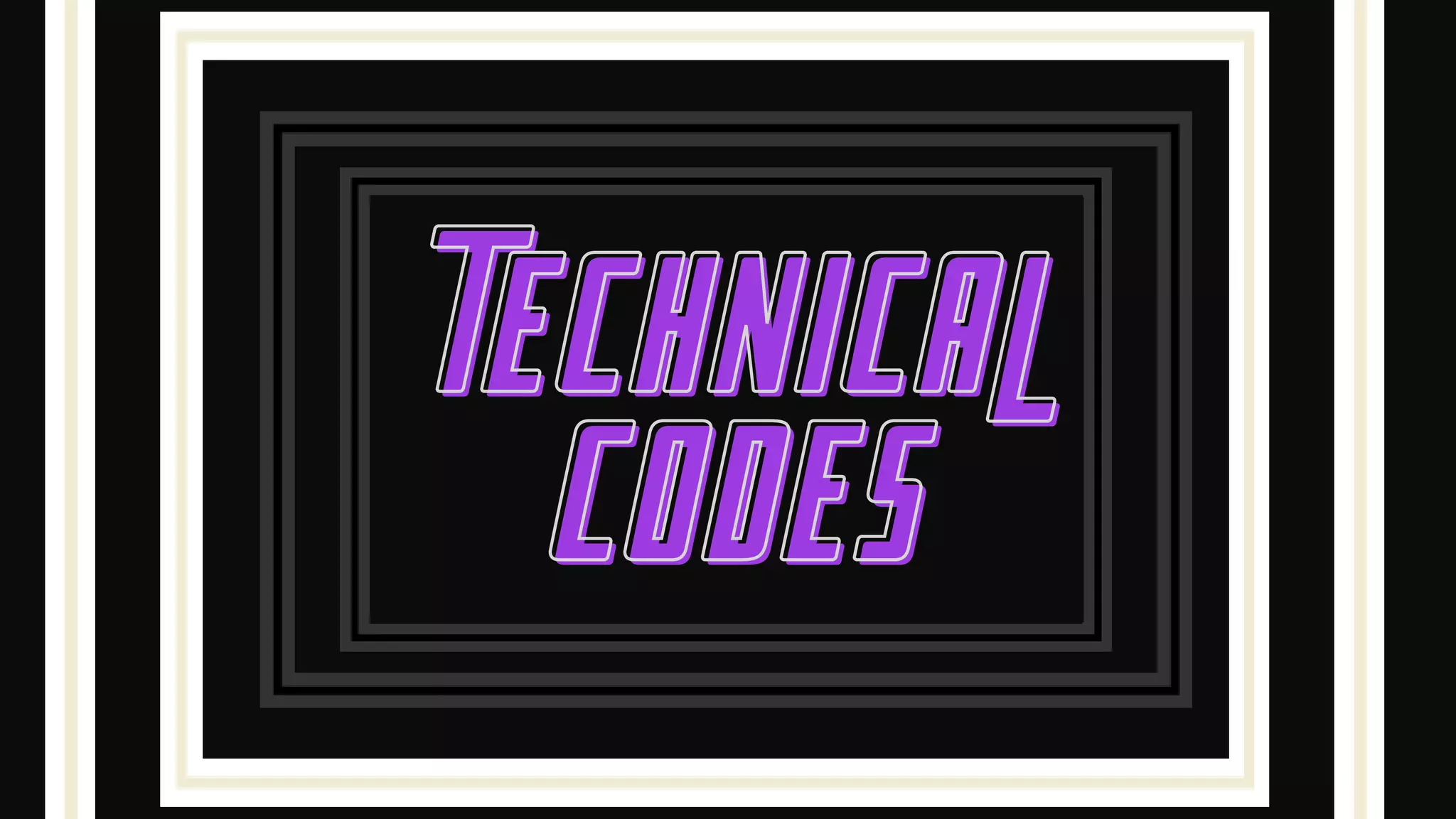
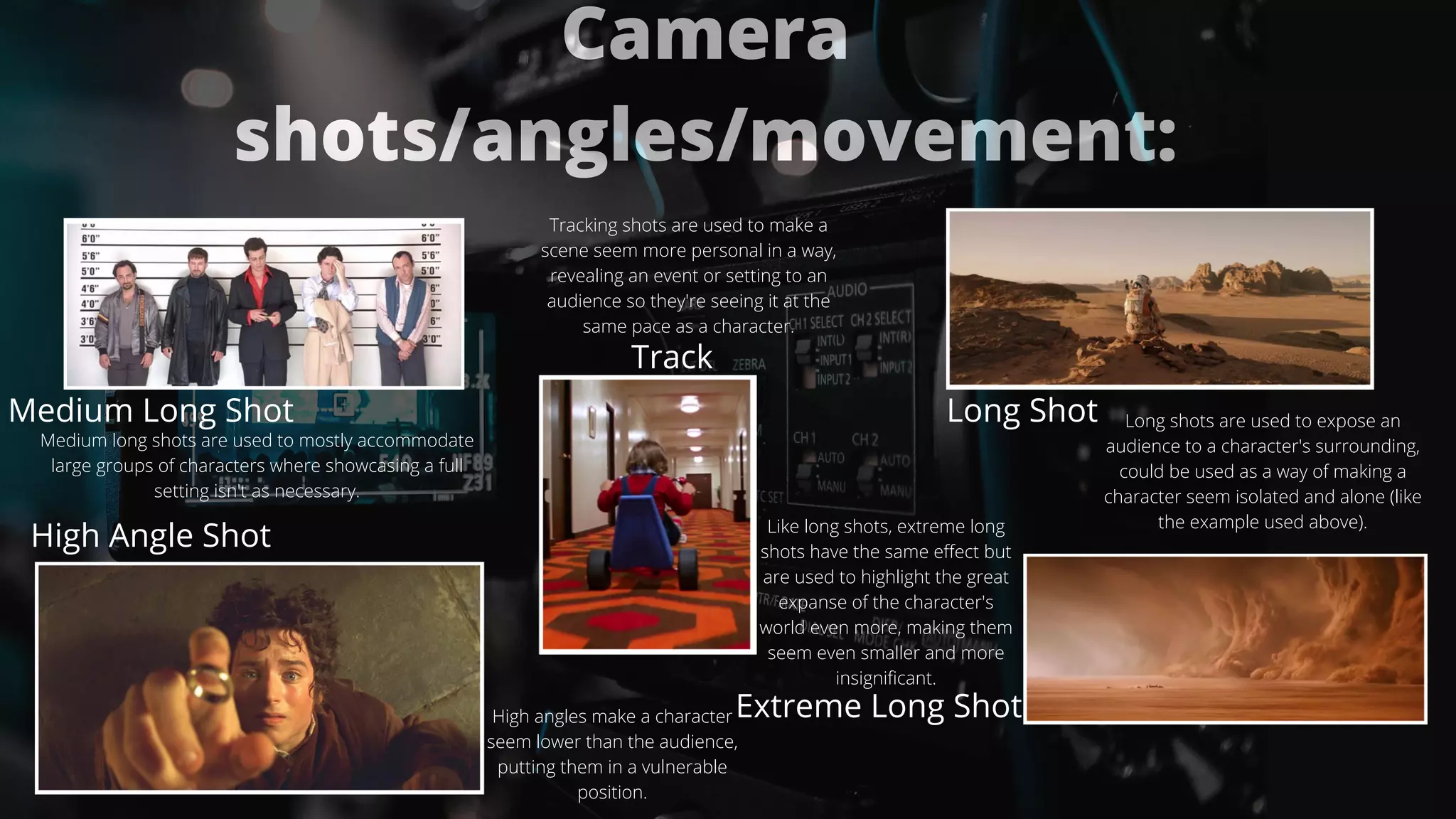
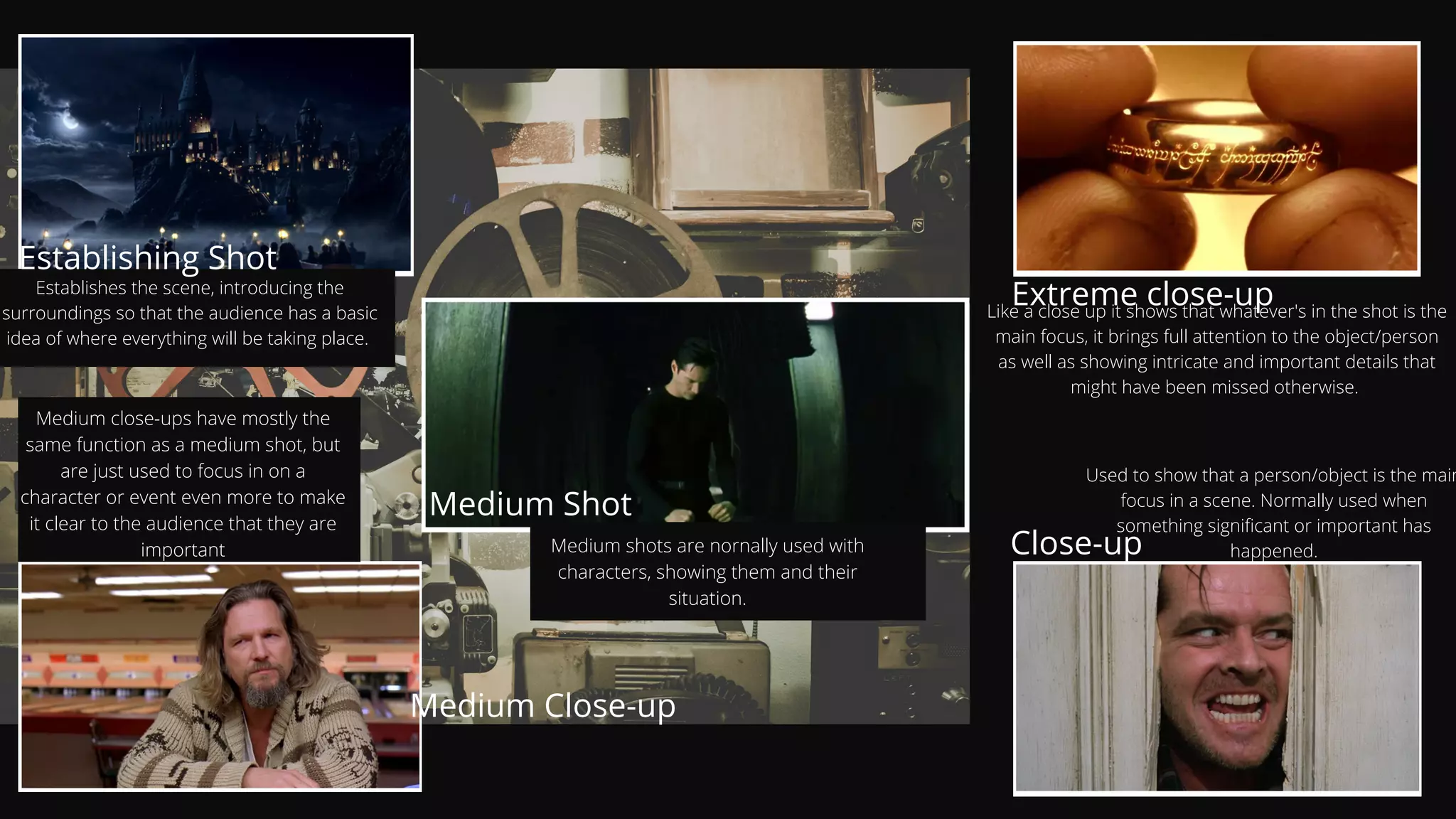
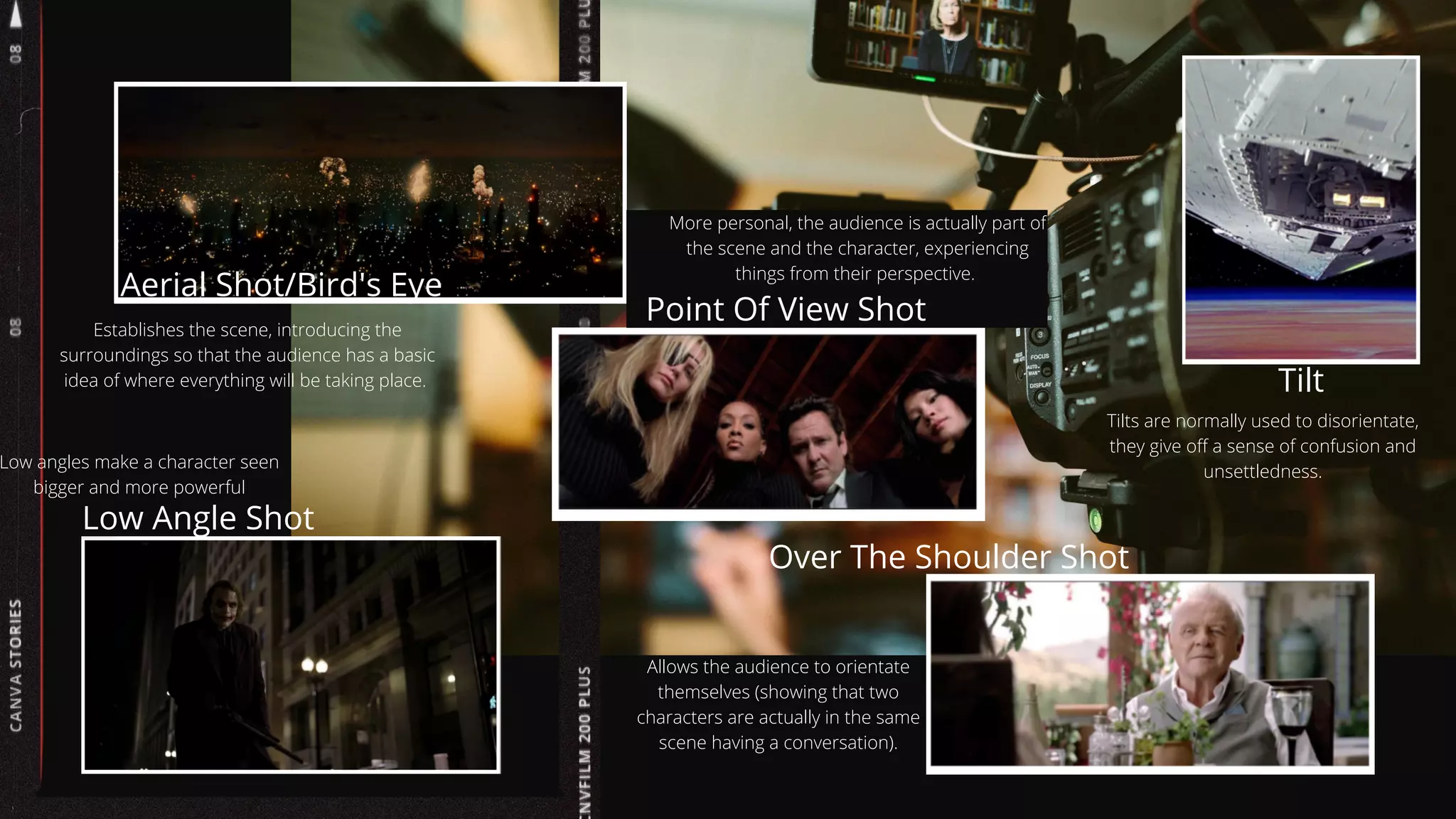
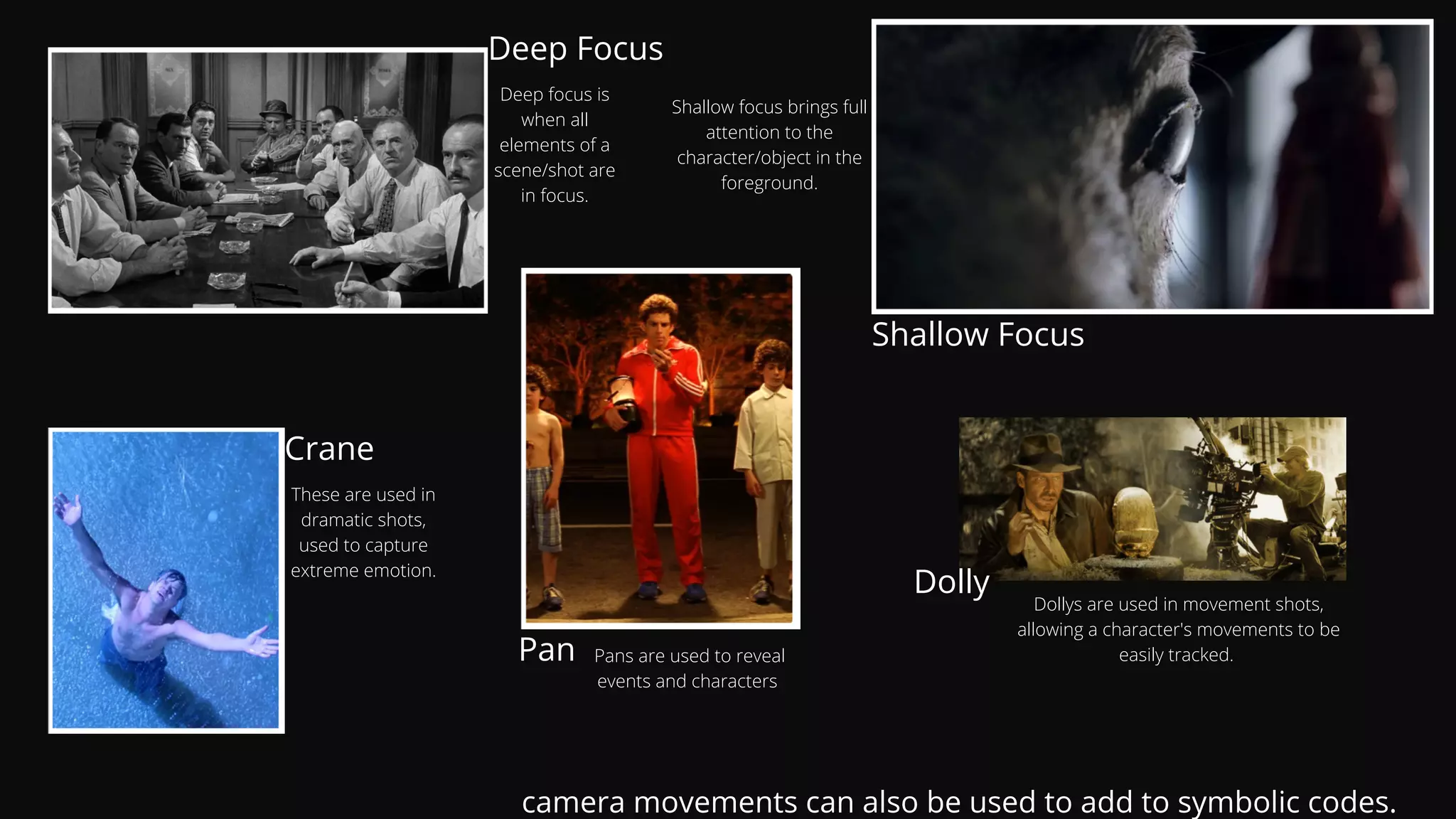

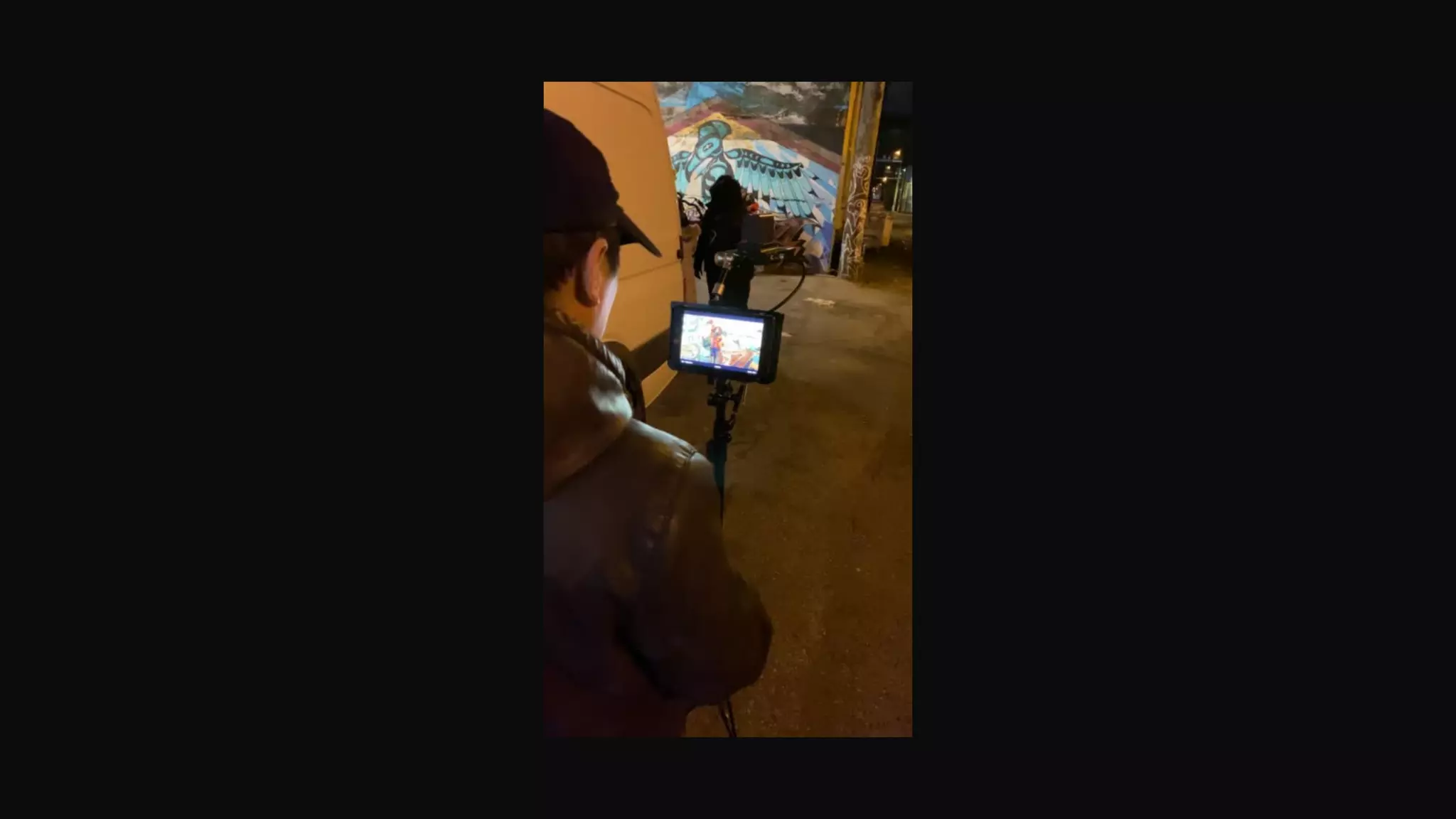
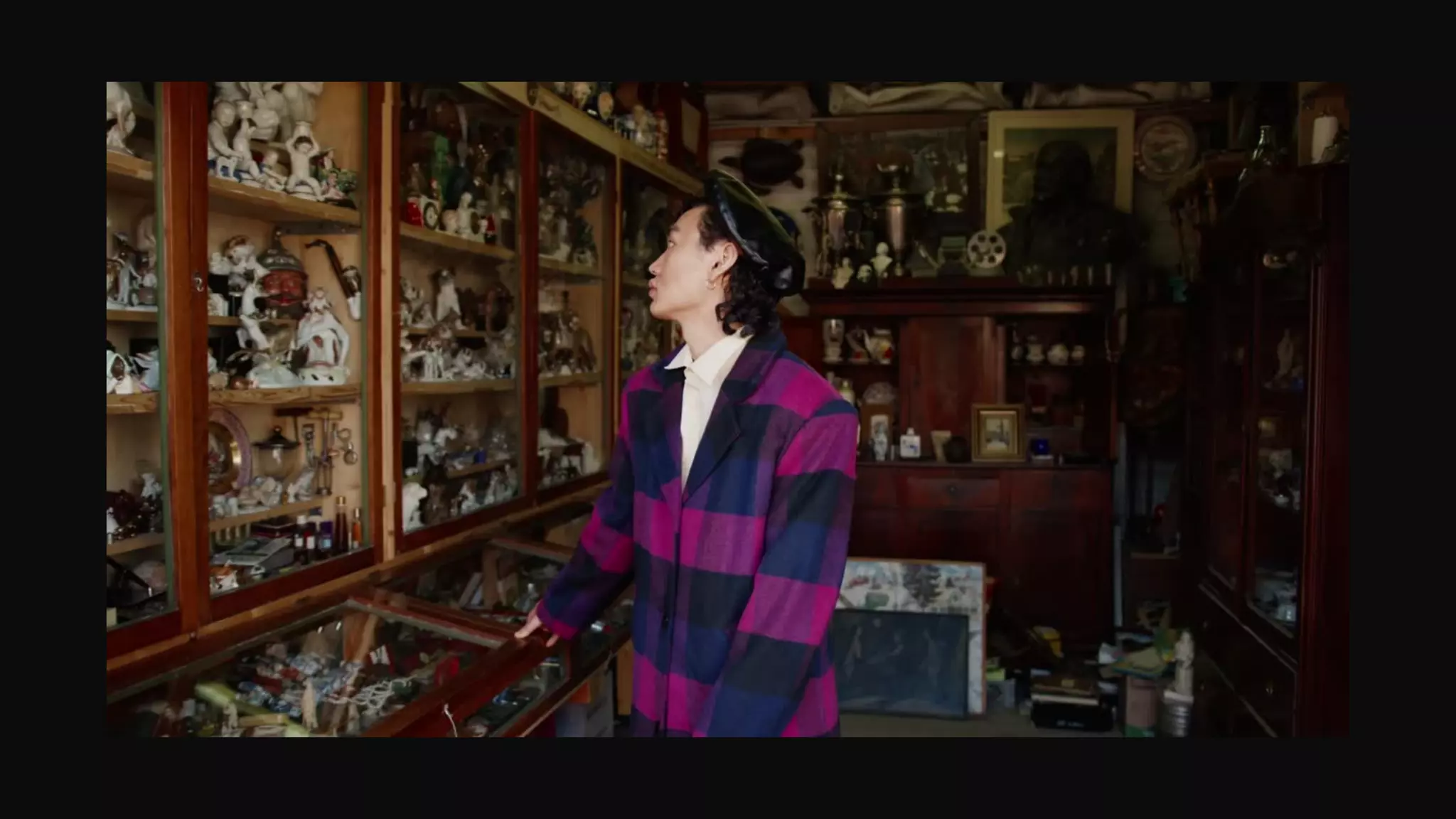
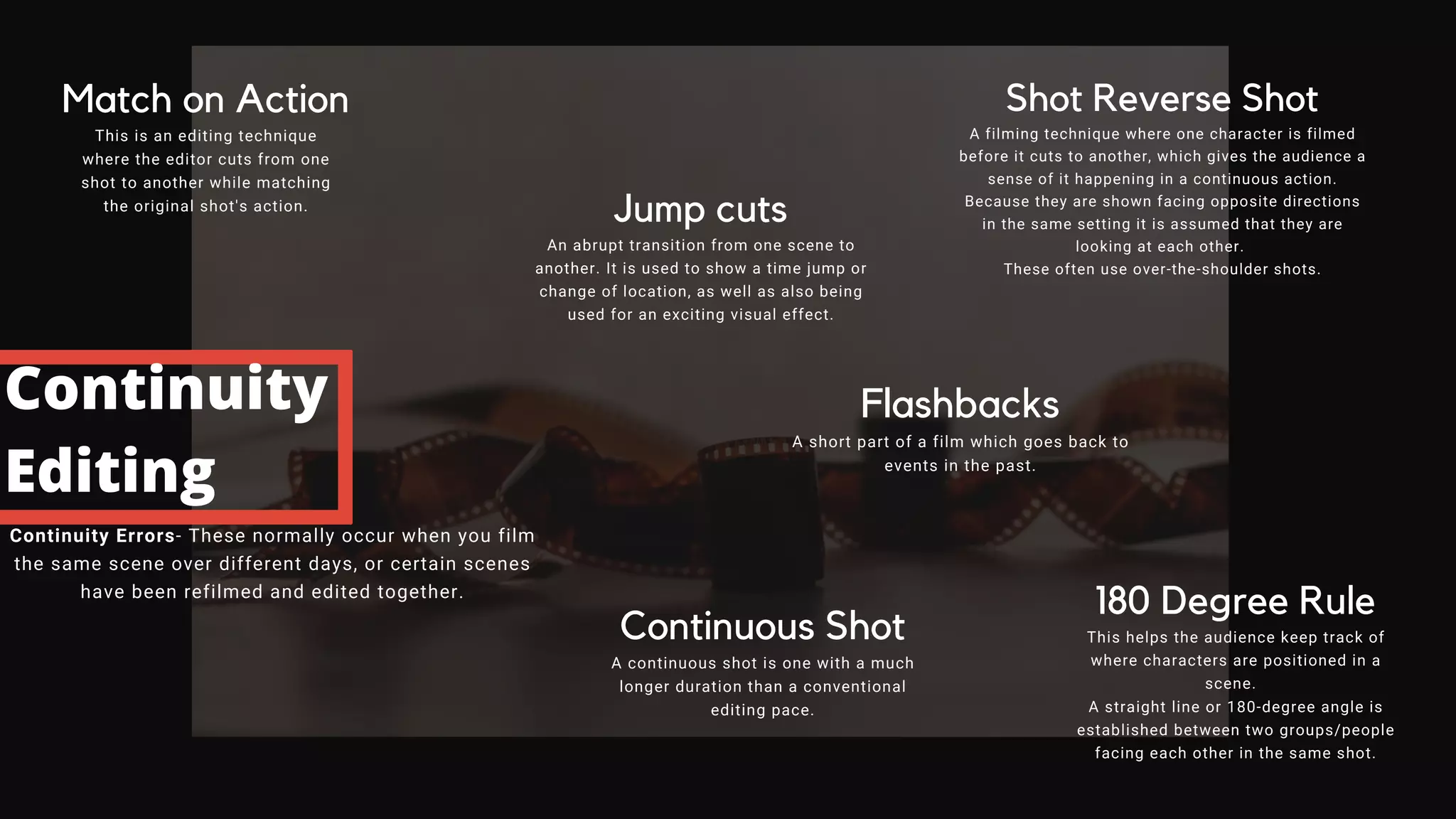

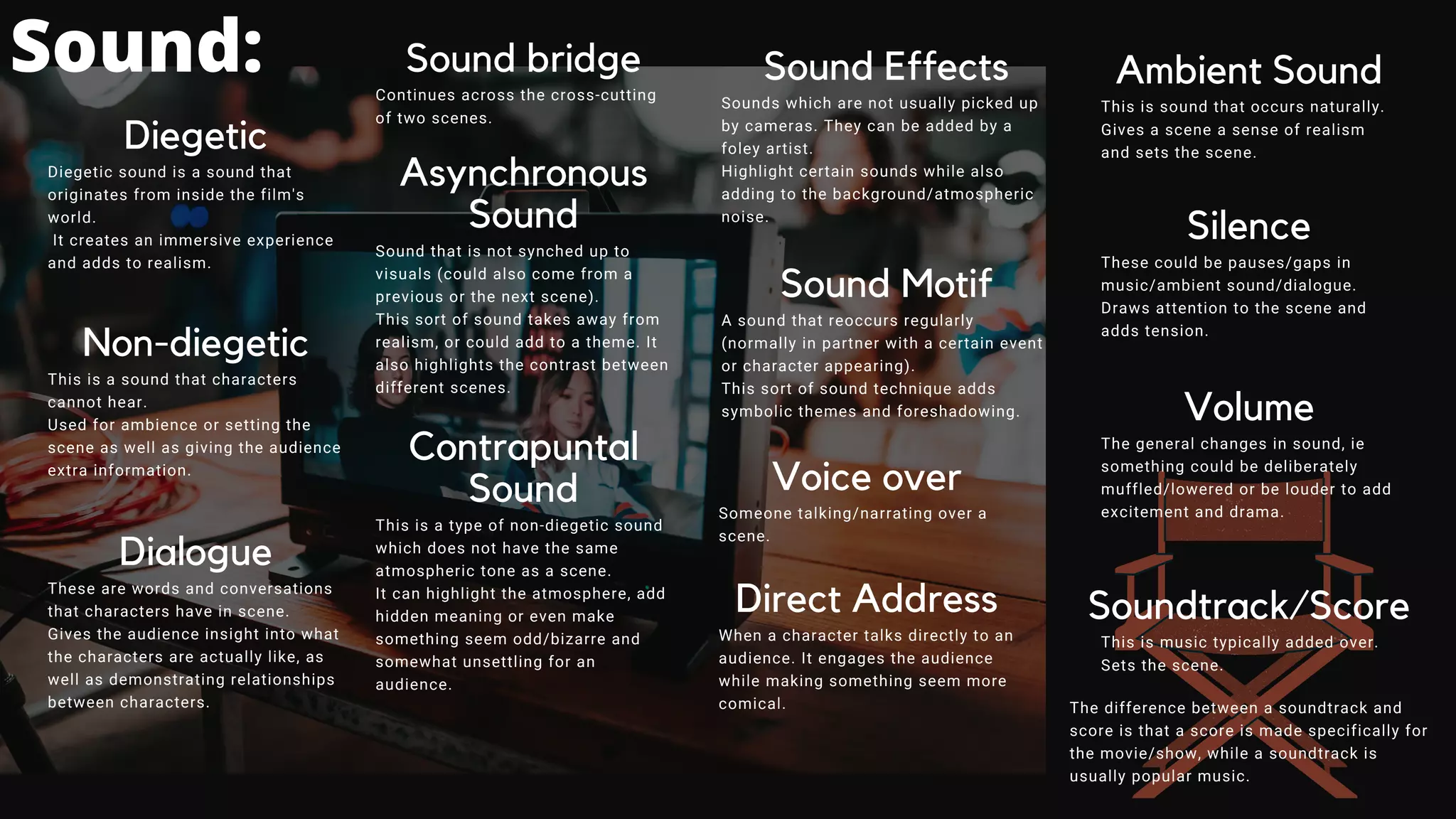
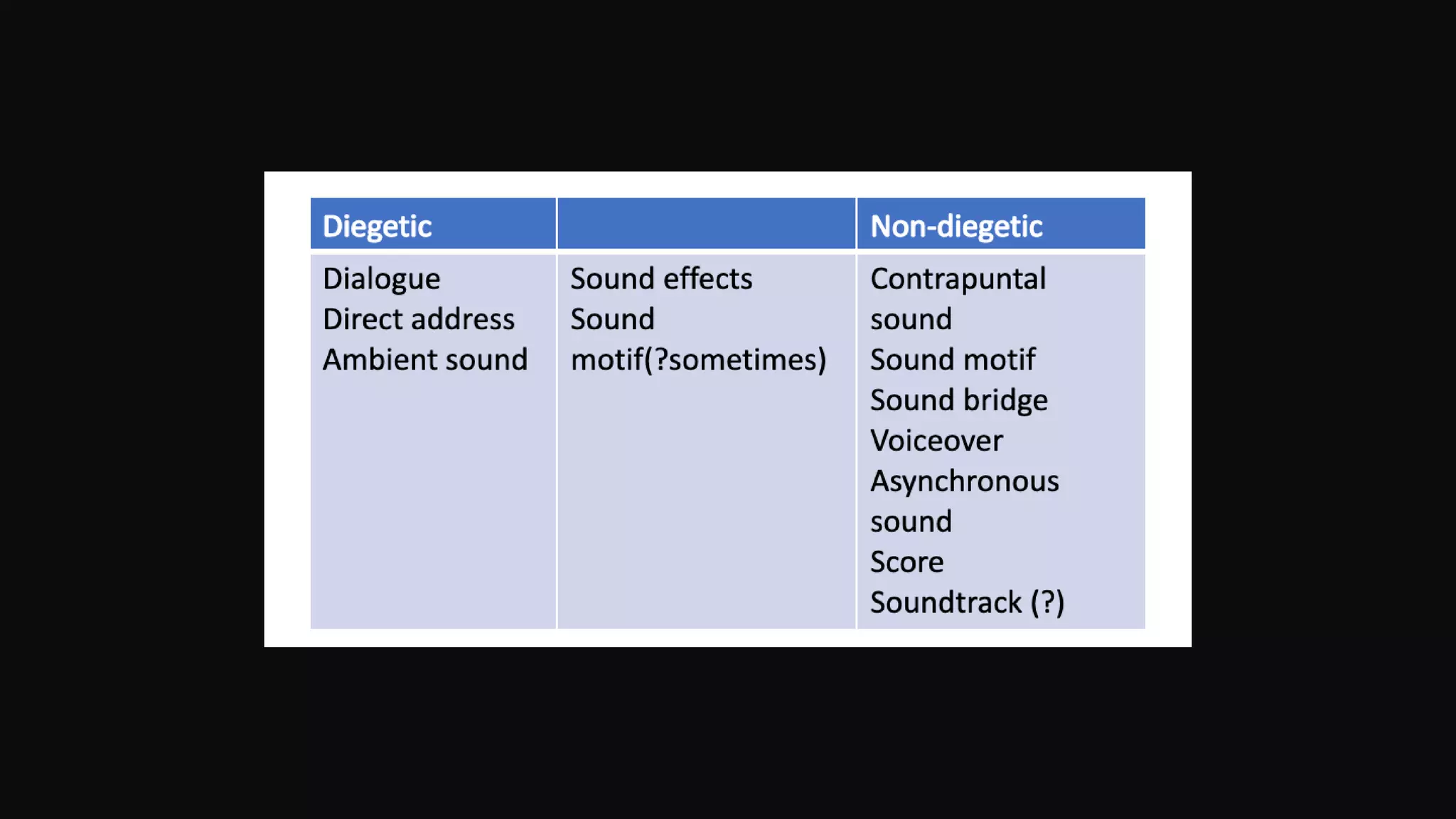
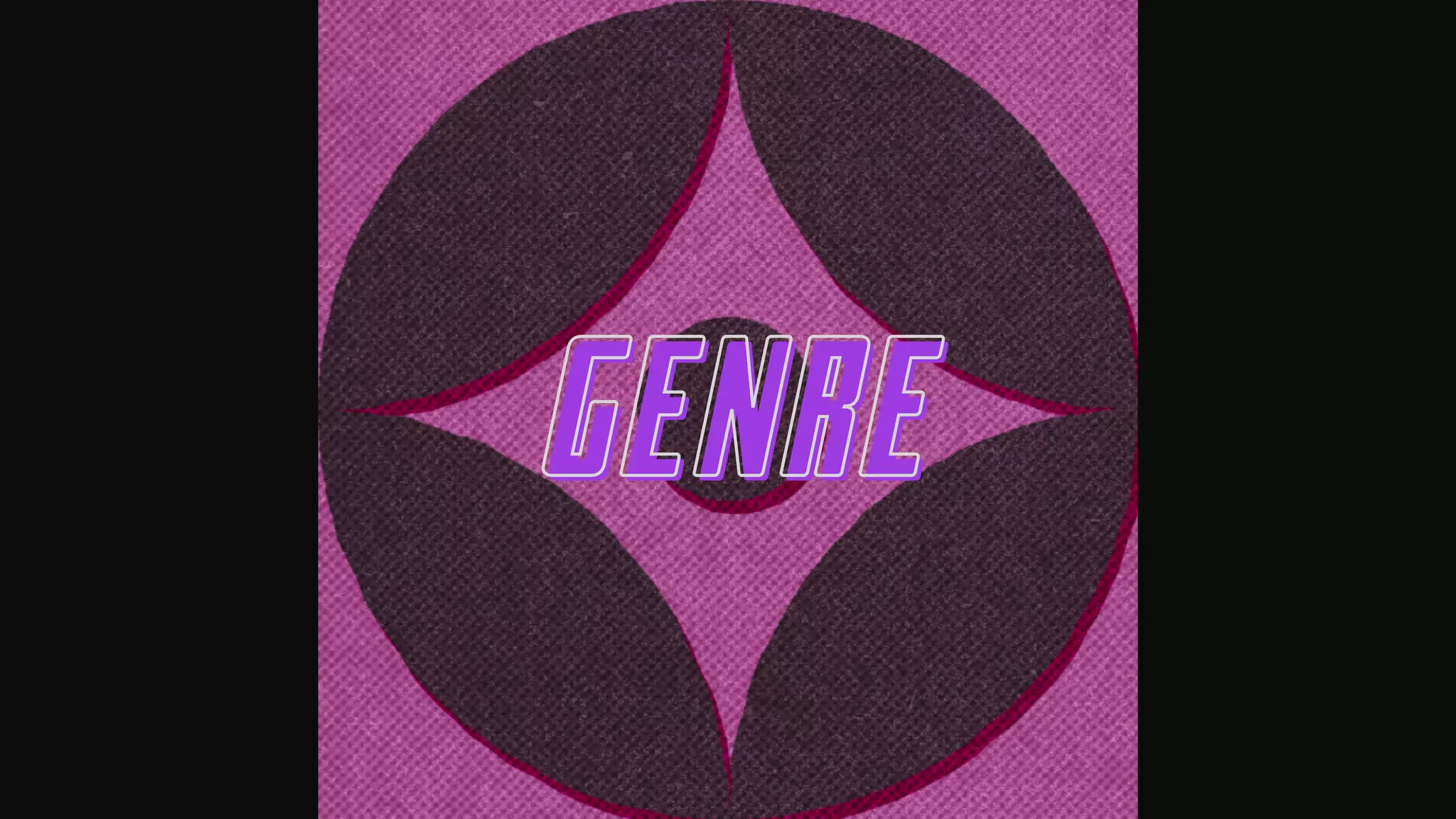
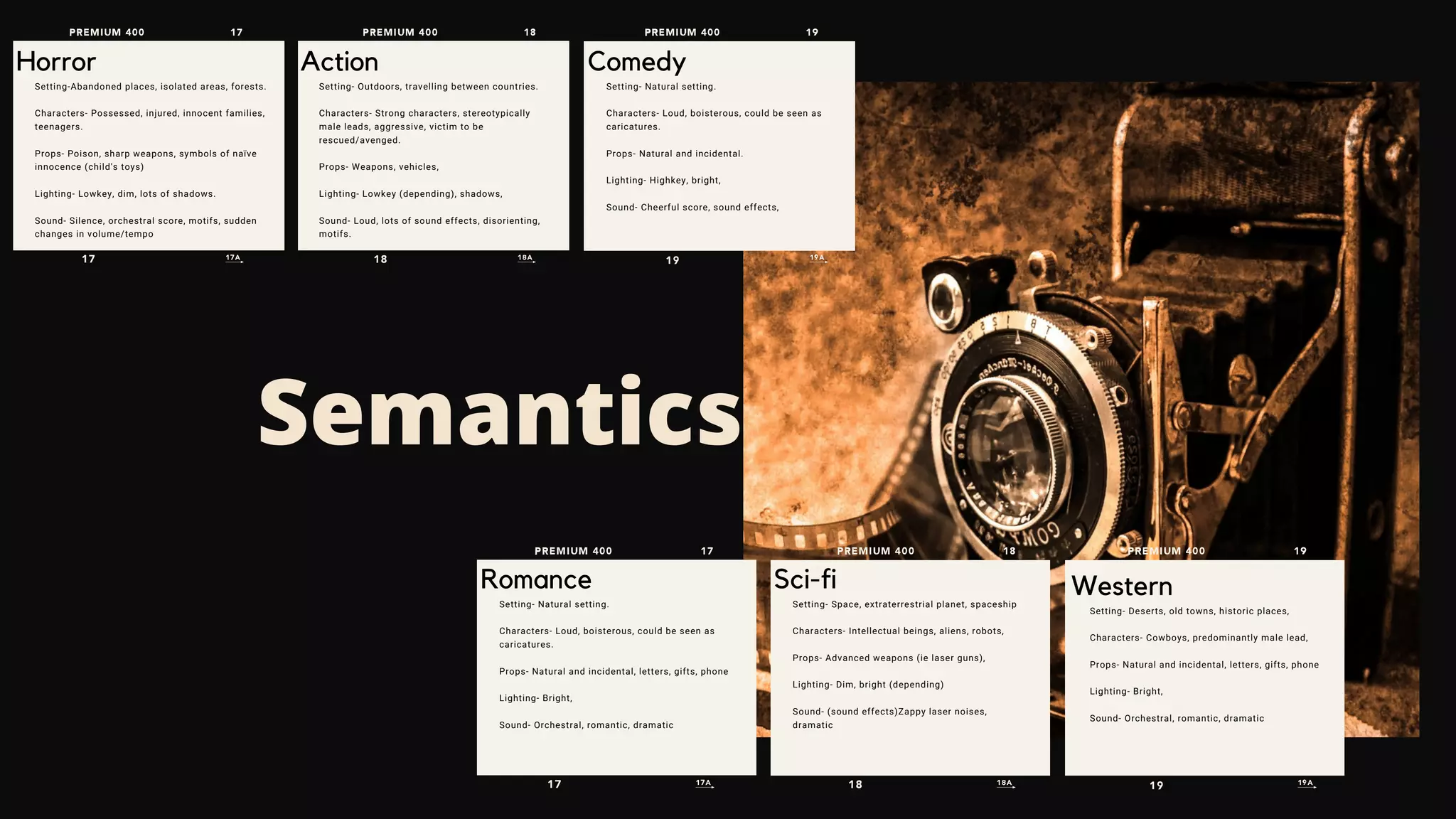
![Syntactics
Horror
Possessed belong/ building. New family move in
unaware.
Teenagers sneak into abandoned place and
delinquent activity ensues, provoking the anger of
some long forgotten demon/god/old man.
Serial killer.
Revenge.
Action
Rescuing someone from kidnappers.
Race against time
Stealing something back from thieves.
Good v. bad feud
Mission.
Revenge.
Comedy
Mistaken identity/understanding/situation.
Delinquent behaviour.
Stereotypes and satire.
Romance
High school/YA romance.
Person arrives in a new town meets local heart
throb.
Enemies to lovers trope.
Childhood best friends who realise they've been
the one for each other all along after almost 2
hours of wasting time who then become lovers
trope.
Sci-fi
Travelling to a new world and getting lost/
struggling to survive.
Time travel.
Saving humanity. (race against time)
Travelling across the galaxies in search of new
land/resources.
Intellectual scientists that seem to lose every
semblance of common sense the second the red
light starts flashing.
Western
Set in the past.
Saving the town from the evil sheriff
(or if sheriff is actually a decent human being)
then the newest character first introduced as a
helpful [insert typical out of town person job] who
is then revealed to be an outlaw.
Following a falsely accused outlaw on their
journey for justice.
Travelling across the country in search of
something.
Protection.
Revenge
Good v evil](https://image.slidesharecdn.com/copyofmediastudieskeyconcepts-211028101717/75/Cheyenne-Media-Studies-Key-Concepts-47-2048.jpg)
